What to Do in Paris: A Complete Guide (For First Timers)
Paris is a city that has captivated us for years. Particularly Matt, the resident French speaker in this corner of the internet (he took seven years of French in high school, and it takes 2-3 days for it to reemerge when he’s in France).
We have both been to Paris many times at this point, with Matt making roughly one visit per year for the last three years (including the most recent 10 day visit late last year).
As you might imagine based on how often we find ourselves there, we love Paris.
However, while we love Paris, we also hear from many readers about how they’re either apprehensive about going to Paris for the first time based on things they’ve heard (which tend to be out of date stereotypes about grumpy Parisians) OR that they went to Paris and hated it.
Turns out, Paris is a somewhat polarizing place. And our hypothesis is that is has to do with expectations.
If you go to Paris expecting to step off the plane and straight into a fairytale… we have some bad news for you.
The truth is that Paris is a big, big city, with all of the big city problems you find elsewhere. It’s crowded (especially main attractions). There’s often trash bags out on the street (NYC style). For some reason, people refuse to clean up after their dogs.
But here’s the other truth; you absolutely can find slices of that fairytale version of Paris in the big, bustling city that it has become.
Plus, the fact that it’s a big city means that there’s an endless number of things to do, from world-class art museums, to excellent green spaces, to great neighborhoods to explore.
In this guide to what to do in Paris, we’re not going to give you a list of every single museum, park, and church that you could possibly see in Paris.
Instead, we’ll give you a blend of the main attractions in Paris – what they are, some brief historical context, and how to see them – but we’ll also give you some of our other favorite things to do in the French capital that a lot of people just completely miss.
Which, to be honest, is mostly eating and drinking, with a few magnificent views of the city sprinkled in for good measure.
Armed with that (and our guide to planning a Paris itinerary to help you put it all together), you’ll be ready to plan a trip that will go a level deeper than most and learn about the different aspects of Paris’s history and culture that have shaped the city as we know it today.
Learning is our favorite part of travel, which you’ll probably realize as you read this.
Sound good to you? Let’s get into it.
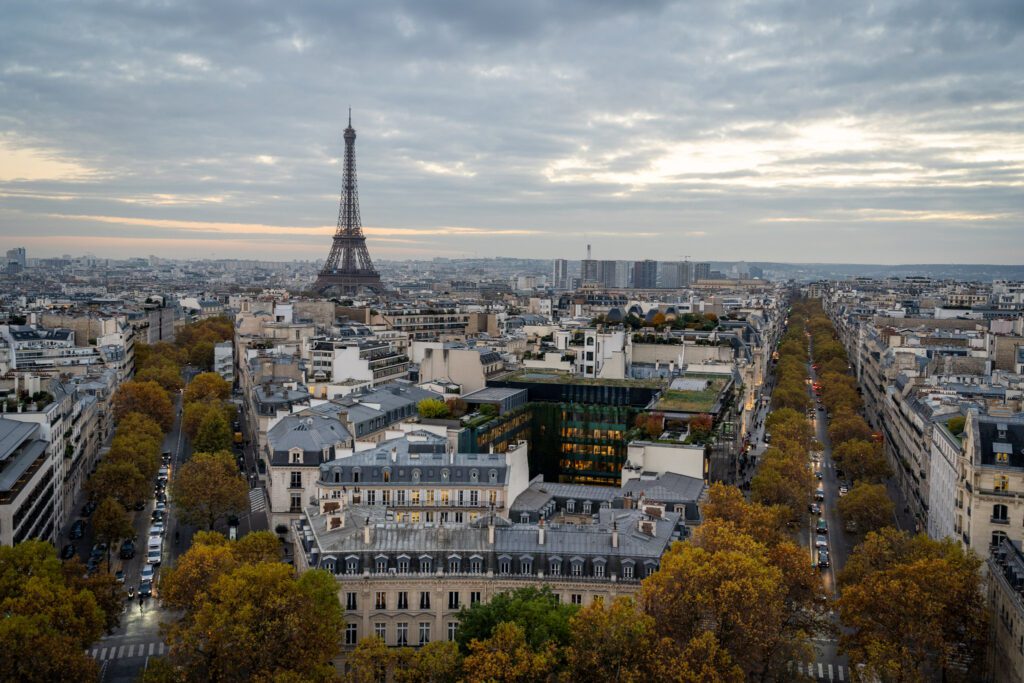
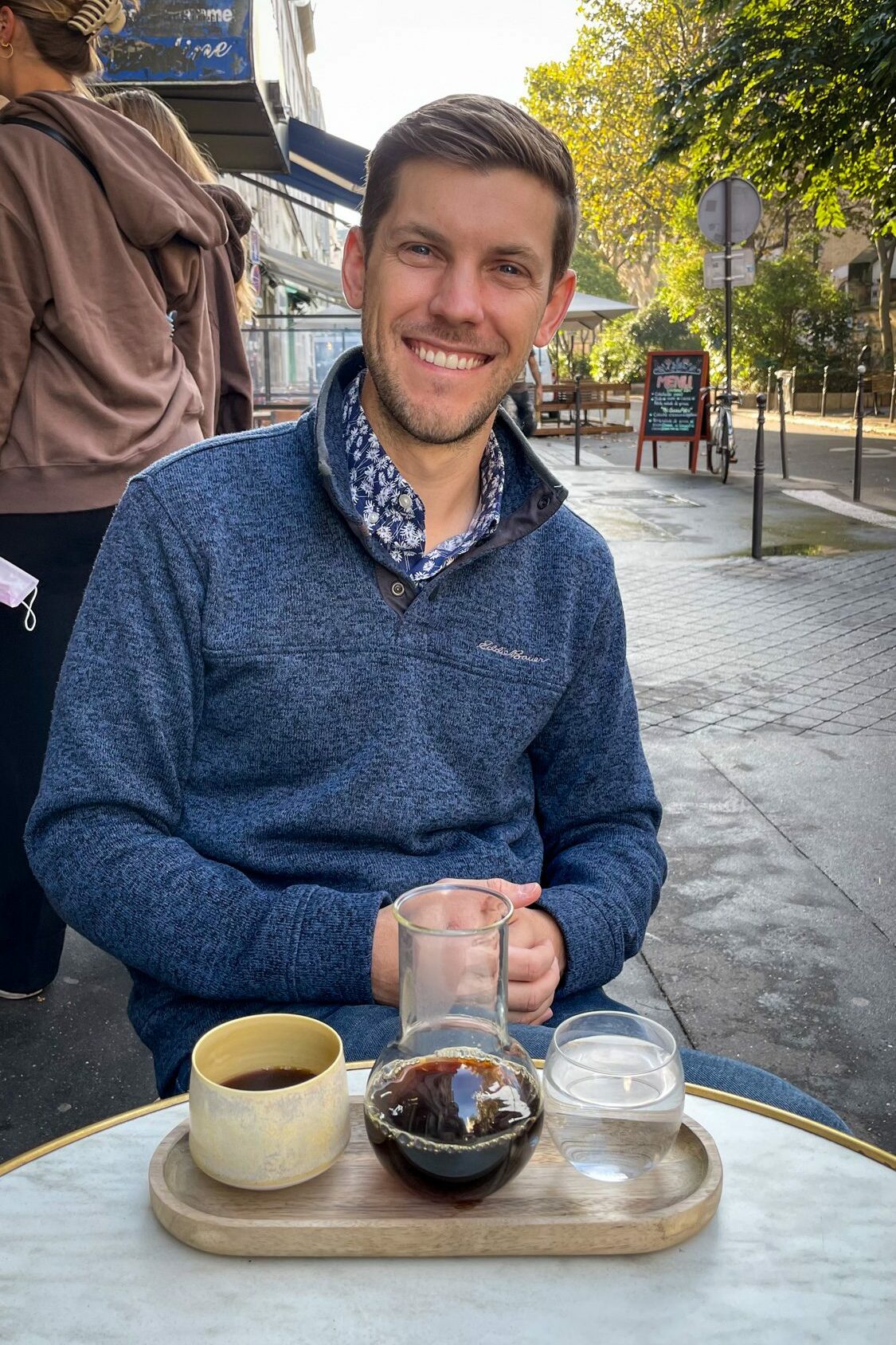
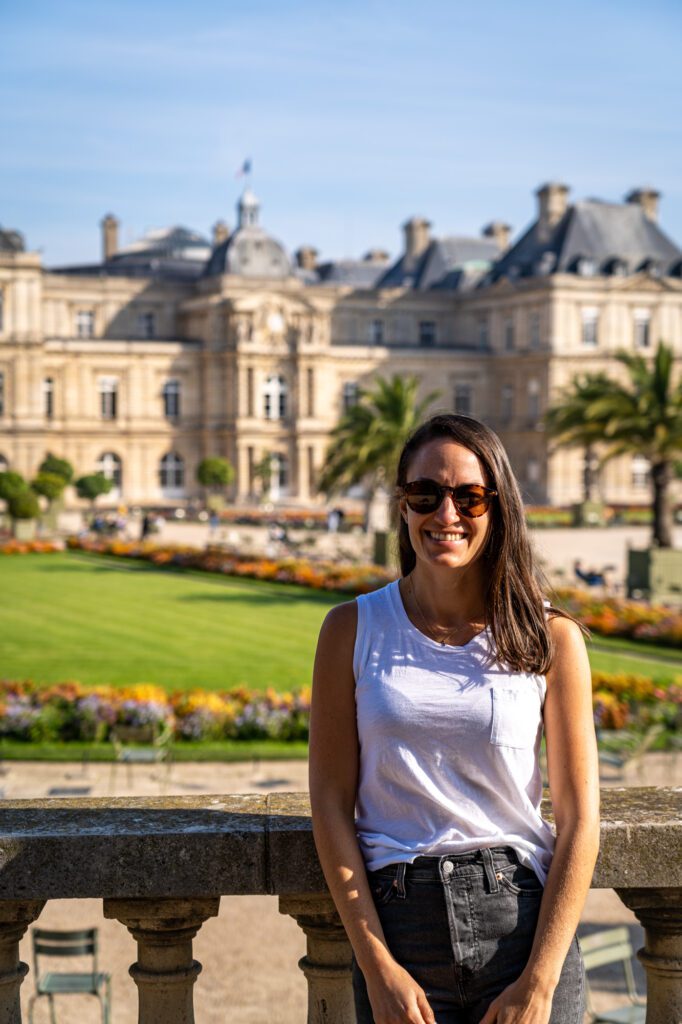
Disclaimer: Some of the links in this post, like hotel links, are affiliate links, meaning at no additional cost to you, we make a little bit of money if you click through and book. That being said, we would never recommend something to you that we don’t stand behind 100%.
Exactly What to Do in Paris (for First Timers)
We have this guide broken up into four sections to make it a little more digestible.
They are:
- The Main Sights in Paris
- Other Things in Paris That We Love
- Things to Do For Foodies in Paris
- The Best Views in Paris
Obviously, some things will take more time than others (e.g. the Louvre vs. enjoying a glass of French wine), so take the order with a grain of salt.
One other thing to know is that we go into detail on why we believe each thing deserves a spot on the list, and all the practical information you need to actually do it like how much it costs and how to get tickets.
We get really frustrated when we read things, and there’s no actual details that help us plan our trip.
To that point, if there’s something missing or something has changed, please please please let us know so we can fix it!
The Main Sights in Paris
In this first section, let’s talk about the main sights in Paris: the Louvre, the Eiffel Tower, and Notre Dame and Sainte Chappelle, the two churches on Île de la Cité in the middle of the Seine.
The thing we want to make super duper clear is that we think that these shouldn’t be the only things you do while you’re in Paris.
We also think it’s important to consider how you want to experience each of the main sights. Which is why we have detailed guides below that include our recommendations on how best to tackle each sight to get the most from the experience.
Whatever you do, make sure to save time for the other stuff – the food, the views, soaking up the atmosphere, and some good old fashioned wandering – in between these main sights.
The Louvre
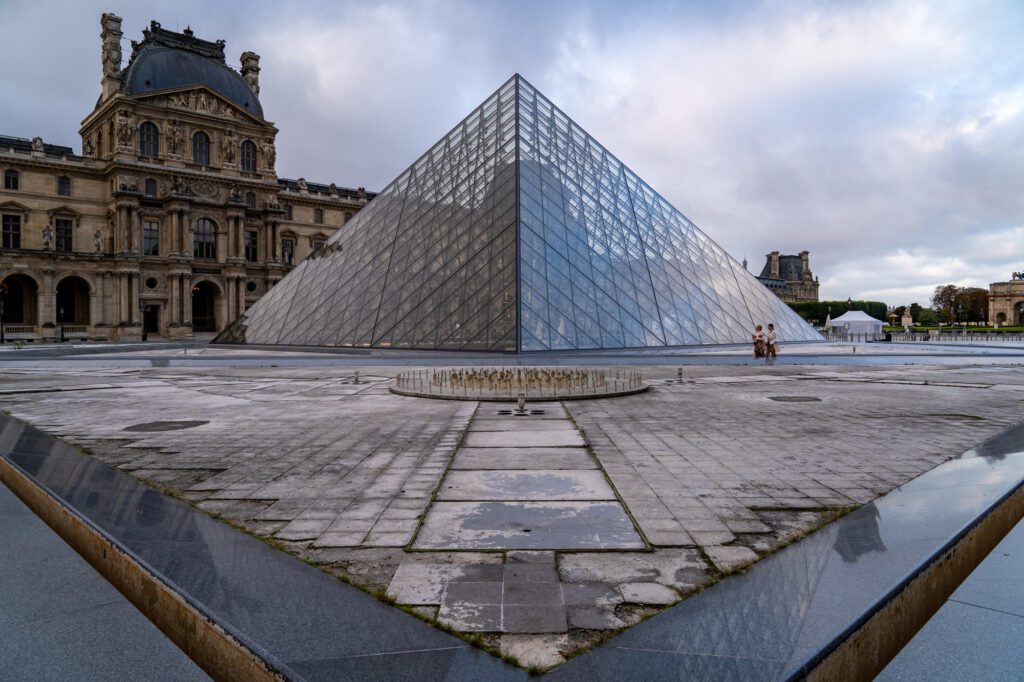
It makes sense for us to start with the Louvre because it is the single tourist attraction that is going to take up the most time and energy in terms of both planning and visiting.
There are a few questions you need to answer about your visit, which we’ll walk you through (e.g. what time to visit, should you do a tour).
Before we get into specifics about the Louvre – how to visit, should you do a tour, how to maximize your time, etc – let’s take a step back and talk about what the Louvre is.
At a high level, the Louvre is the national museum of France, featuring a huge, diverse collection of art from all over the world.
We have lots of opinions about the Louvre, and the high level takeaway is that it’s complicated.
On the one hand, it’s a dazzling collection of art from all across the world.
On the other hand, similar to the British Museum, it’s hard not to think about how exactly some of the art on display ended up here.
The most practical opinion that we have is that the Louvre is an absolute beast of an art museum, and you should absolutely not try to see it all in one day.
In fact, if it’s your first time in the museum, our recommendation would be to set aside three or four hours (at the most) and have a list of “must-sees,” with some time spent wandering areas that seem interesting to you.
The building that you’ll be entering to see the collection has an interesting story in its own right. Over the years, it has been a fort protecting medieval Paris’ western flank, a residence, and a royal palace.
Then, during the French Revolution when the French rose up and said they were sick of the whole “king” schtick, it was turned into a museum open to the public. For enlightenment of the common man and all that jazz.
Something I didn’t really notice until I did a tour on my last visit is that you can actually see the remnants of the “fort” piece of history in the basement of the Louvre. And it very much looks like a medieval castle, or at least the restored sections of the walls do.
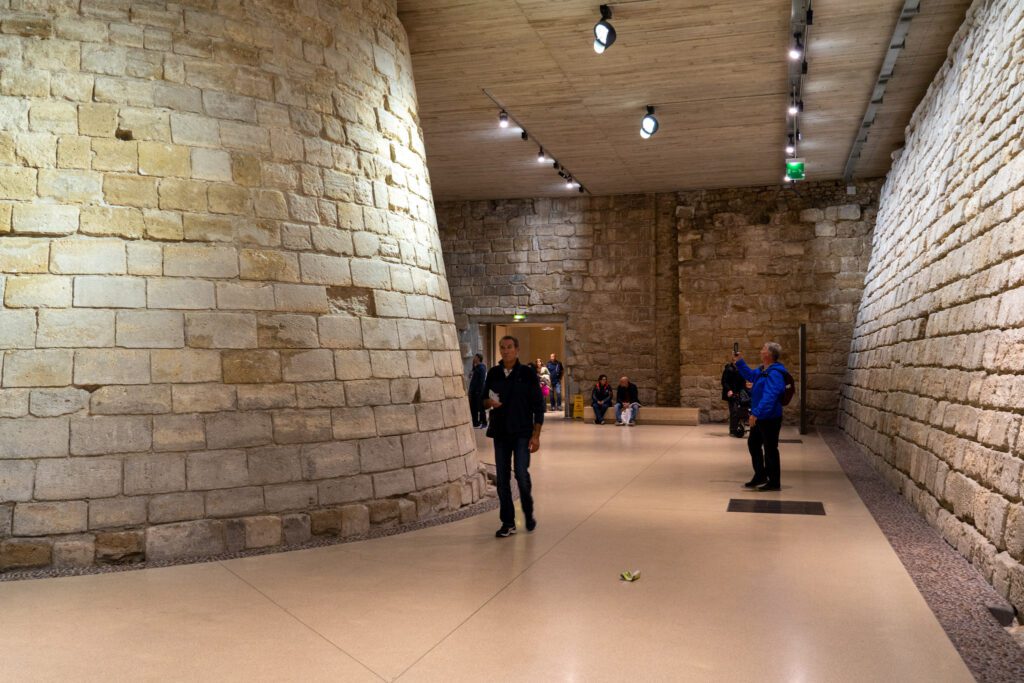
Which is hard to believe, because the rest of the building looks very much like an ornate palace.
In terms of the collection itself, we have a few favorites that we think you probably shouldn’t miss (though there is plenty more to explore than just these highlights): The Winged Victory (which is supposedly the inspiration for the famous Nike swoosh), the French paintings (like Liberty Leading the People, Raft of Medusa, and Crowning of Napoleon) and the iconic Venus de Milo.
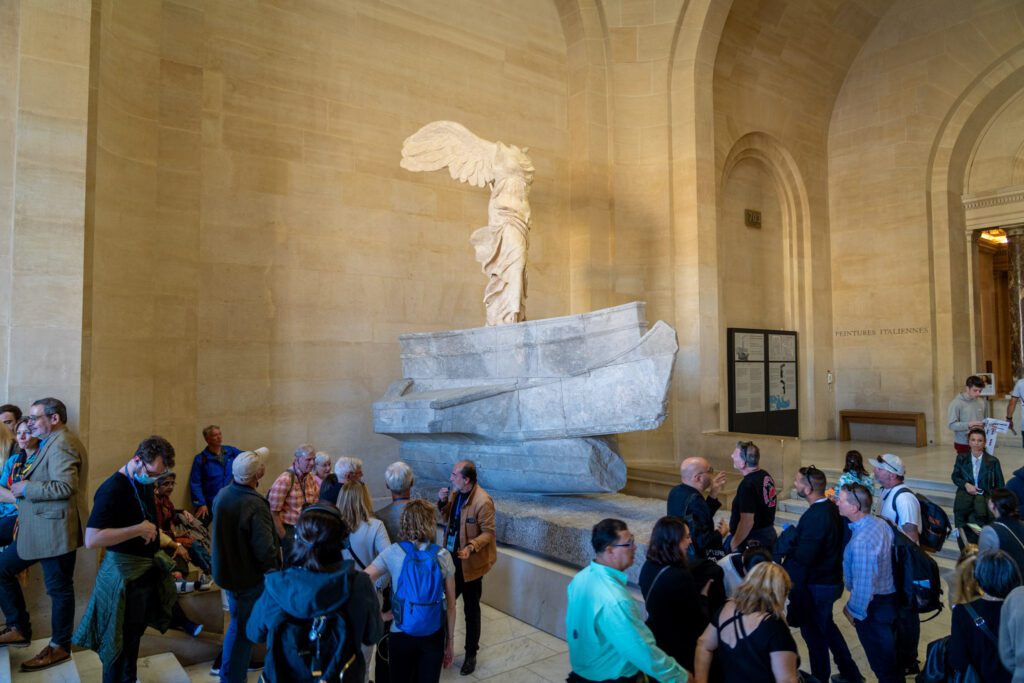
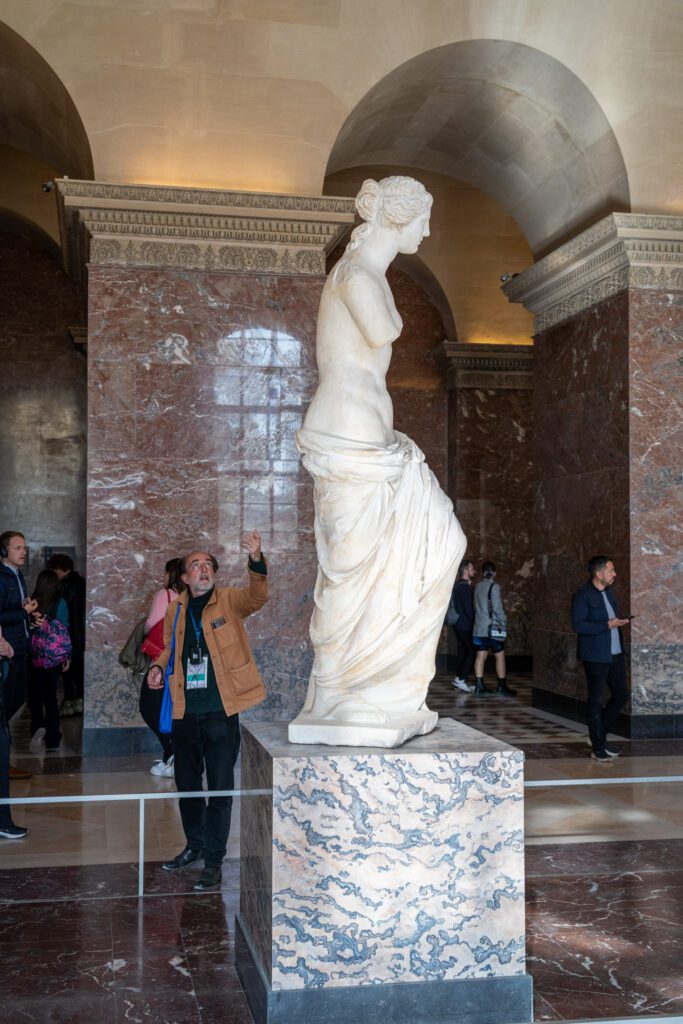
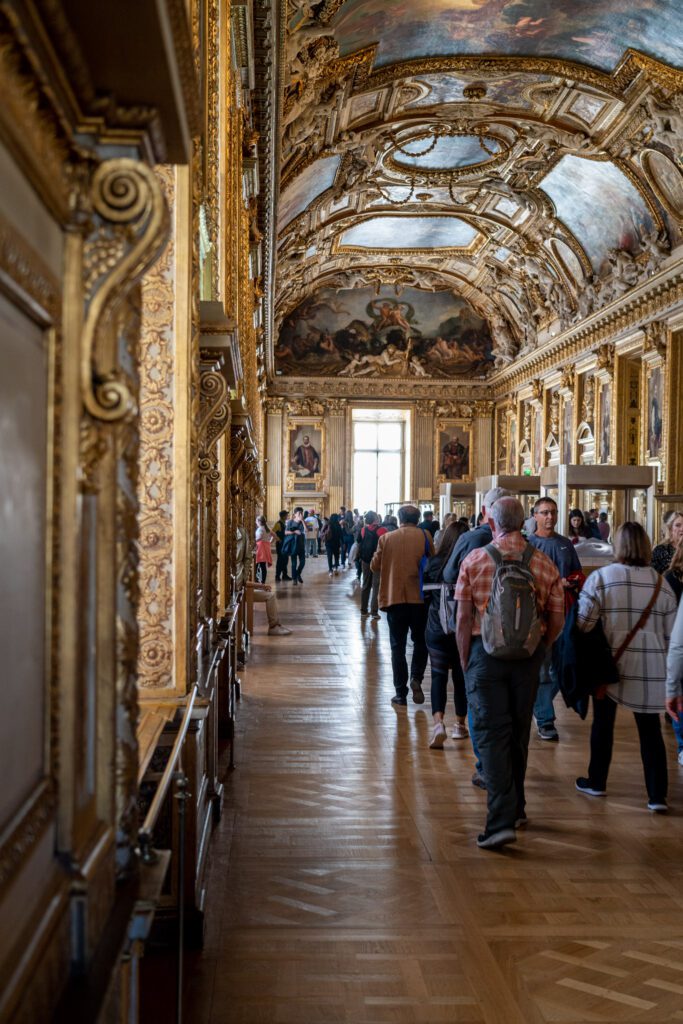
You’ll notice that there’s an obvious missing piece in that list: Da Vinci’s Mona Lisa.
Honestly, the next time I’m in the Louvre, I will absolutely skip it because it’s a fairly underwhelming experience.
The room is packed full of people basically crowd surfing to get a photo of the painting (what are you going to do with that photo? Probably never look at it again).
The painting is relatively small and you can’t really get close enough to admire the techniques. And there are better Da Vinci examples just outside the Mona Lisa room that you can get close to in order to appreciate his genius.
However, I totally understand that you probably want to see it to check it off of your list. I’d just make sure to set your expectations accordingly.
A Note on Timing: The afternoon is generally the best time to visit the Louvre for slightly more manageable crowds.
The late afternoon / early evening will give you a marginally more peaceful experience, which is why we’ve organized the itinerary in this particular way.
The Louvre is open late (until 9pm) on Wednesday and Friday, which is the absolute best time to visit if you want to avoid crowds.
Another important note: The museum is closed on Tuesdays, so plan accordingly. Make sure to review their bag policies (which you can find on their FAQ’s) because big bags are not allowed in the museum.
Should You Do a Guided Tour of the Louvre?
There are a couple of questions you’ll need to answer about your visit to the Louvre, and the most important is probably whether or not to do a guided tour of the Louvre.
For what it’s worth, I did this afternoon tour on that most recent visit (my third time inside the museum) and absolutely loved it.
On our three month European adventure that took us to Italy, Spain, Portugal, and Paris, we had the chance to see multiple famous art museums.
We quickly realized that we’re just not really art museum people. But after a tour of the Uffizi Gallery in Florence, I had an epiphany as to why.
Walking around an art museum and looking at pretty paintings is cool and all, but the real pleasure is when you actually understand the story behind each work of art, and the role they played in history and the progression of art history.
Which, as two normal people, is something we don’t really have in our repertoire.
We highly, highly recommend investing in a guided tour of the Louvre.
We’ve both done it independently – Matt multiple times – and have come to realize that unless you’re an art historian, it’s really, really hard to visit a huge art museum independently and come away with much else than “well that was pretty” or “whoa, they have so much art!”
A guided tour with an art historian is going to give you the context and stories behind each work of art, which are the things that really bring the experience to life.
Plus, arguably more importantly, they’re going to help you understand the important pieces and periods to focus on.
I, Matt, have now done the Louvre three times, twice without a guide and once with a guide, and my experience with a guide brought a level of richness and understanding that I absolutely would have never gotten on my own.
If you’ve only got the time or budget for a single guided tour in Paris, this should be your choice.
I (Matt again) recently did this tour of the Louvre at closing time with Walks – a company I’ve done six or seven tours in Europe with, and really loved it. You can read more about my experience here.
I truly think this tour was worth the time and money for the multiple reasons I listed above.
Visiting the Louvre Independently
If a tour isn’t in the budget (or doesn’t fit with your timing), we have a few thoughts on how to maximize your time and pleasure at the Louvre.
First, absolutely book your tickets well in advance for a timed entry slot, which will allow you to skip the ticket office line and head straight to the security line, which everyone has to wait in (but at least you don’t have to wait in two long lines!).
You’ll want to book your tickets a few months in advance. You can book tickets here.
Second, if you have pre-booked tickets, you can enter through a “secret” entrance (but how secret can it be if it’s listed on the Louvre’s website?) that sees far less crowds called “Porte des Lions.”
You can find it here on Google Maps. This does mean that you don’t go through the iconic entrance in the glass pyramid, but it could literally save you an hour of your precious time.
Note: The entrance at Porte des Lions is temporarily closed, with no timeline for reopening. We’d still skip the pyramid line and instead enter at Carrousel, here on Google Maps, which is a secondary entrance through a mall.
Third, we’d recommend either an afternoon visit (2pm or so), or taking advantage of the late night openings (currently Wednesday and Friday at the time of writing), when the museum is open late (until 9pm) and the crowds are much, much thinner.
It will require a bit of rearranging, but it will be well worth it.
Last, we think the audio guide is worth it, and is a good alternative to a guided tour that will give you a little bit more context and history around the works of art you’re looking at.
Make sure to review their bag policies (which you can find on their FAQ’s) because big bags are not allowed in the museum.
The Eiffel Tower
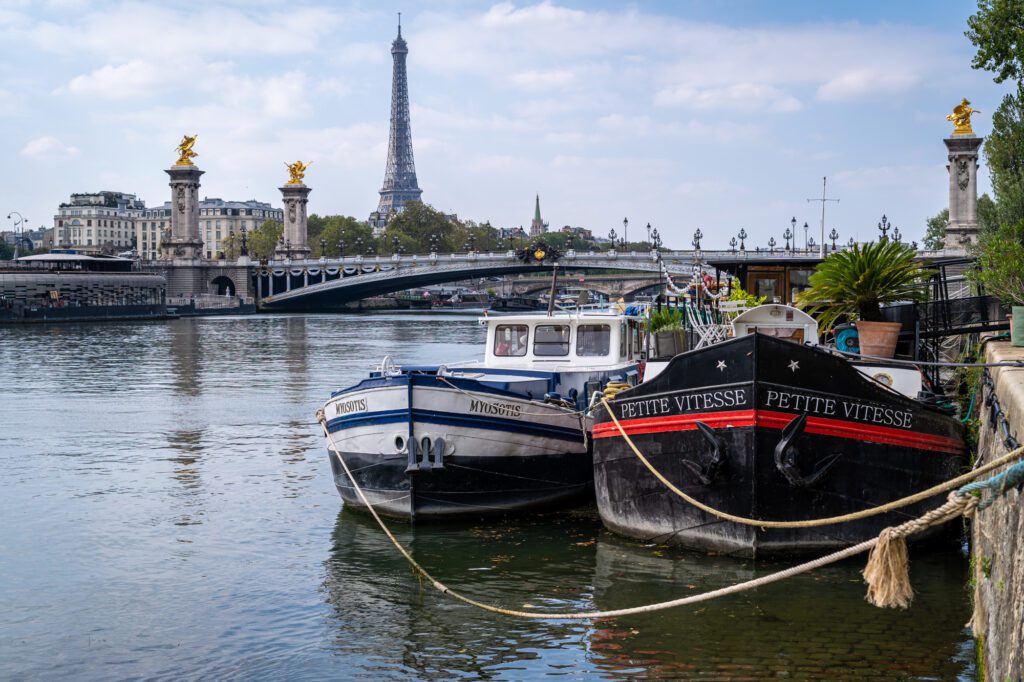
Don your red berets and head to the 7th Arrondissement because it’s time to talk about the Eiffel Tower, which might be the single most famous landmark in the world.
Everyone who comes to Paris wants to see it, and it is a pretty magnificent piece of architecture.
The Eiffel Tower is a lot like the Space Needle in Seattle (where Matt grew up) in one specific sense: you can get a view of the skyline from the top, but it’s missing a key element of the skyline… the Eiffel Tower.
To be honest, I’ve climbed the Eiffel Tower exactly once, and I will never do it again.
Not because it’s horrible or anything, it’s just not really worth the hassle and money to go up there when there are better views of the city that include its most famous landmark to be had, sometimes for free.
For a better view (in our opinions, of course), head either over to Place du Trocadero just across the river, which has an elevated view of the tower, to Pont Alexandre III which has a nice view over the river towards the tower, or to top of the Arc de Triomphe which has the best view in Paris, we think.
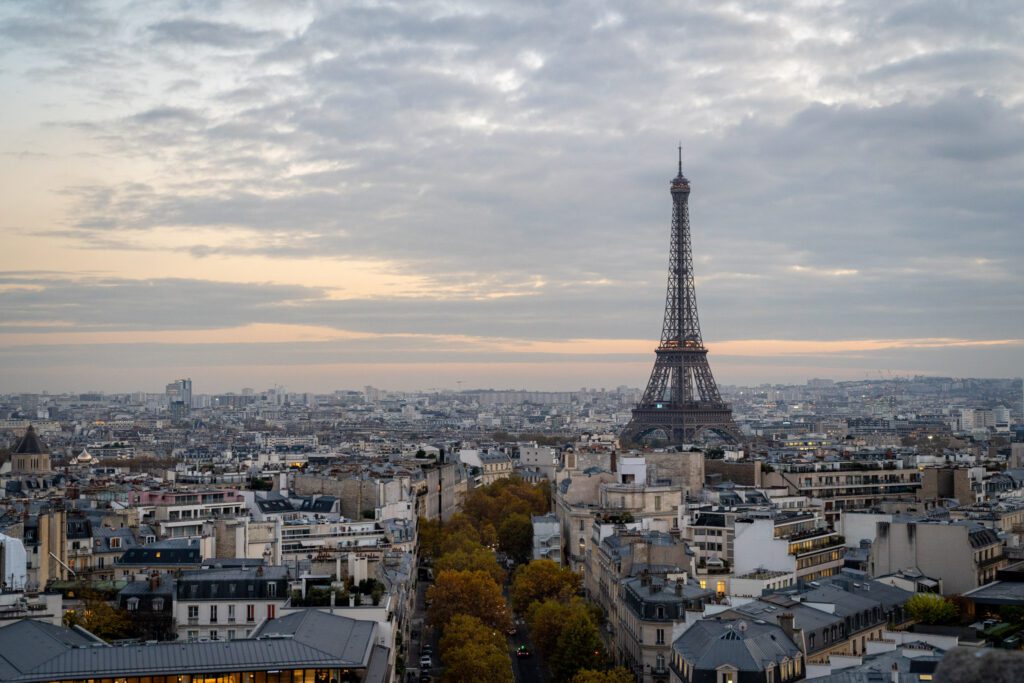
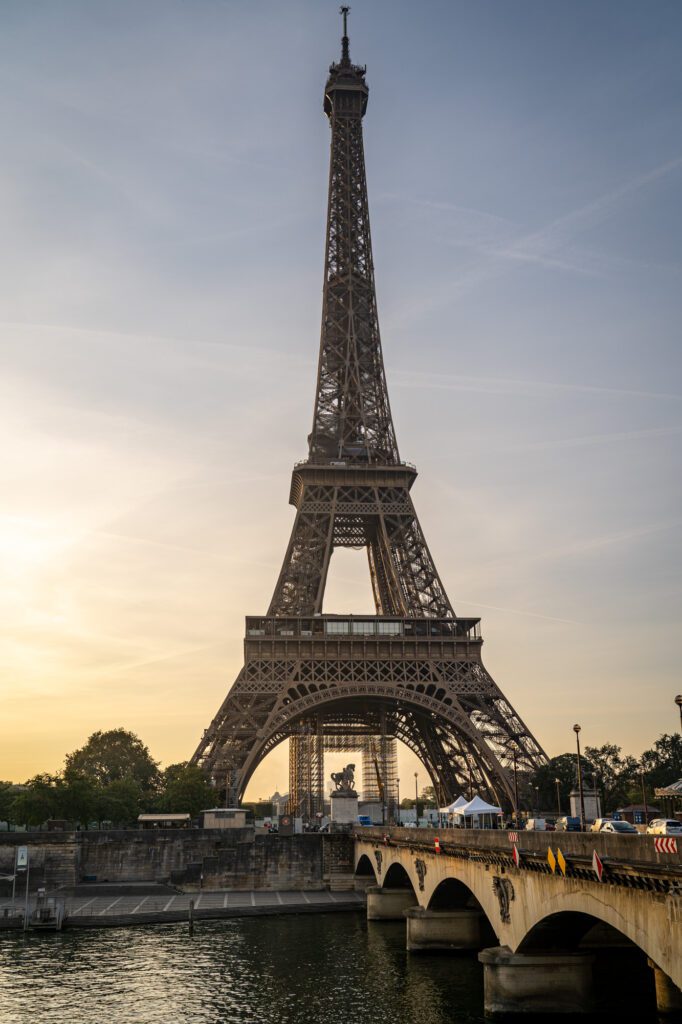
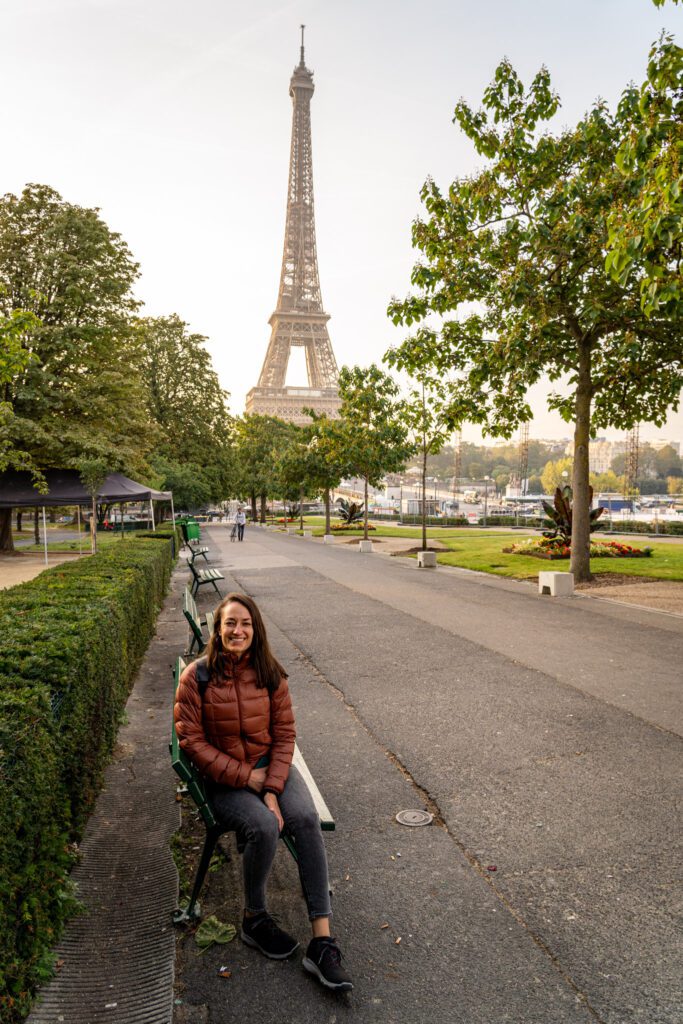
More information and specifics on those views in the “best views” section below.
Now that we’ve covered how NOT to see the Eiffel Tower (going to the top), what’s the best way to experience it?
We think it’s with an afternoon/evening picnic at the Champs de Mars compiled of fresh bread from your bakery of choice, some cheese and/or charcuterie from a local fromagerie, and a bottle of wine to wash it down.
If you come here on any given afternoon in Paris (provided the weather is nice), you’ll find it teeming with tourists (and the occasional local) lounging on the grass and soaking in the views of the tower from below.
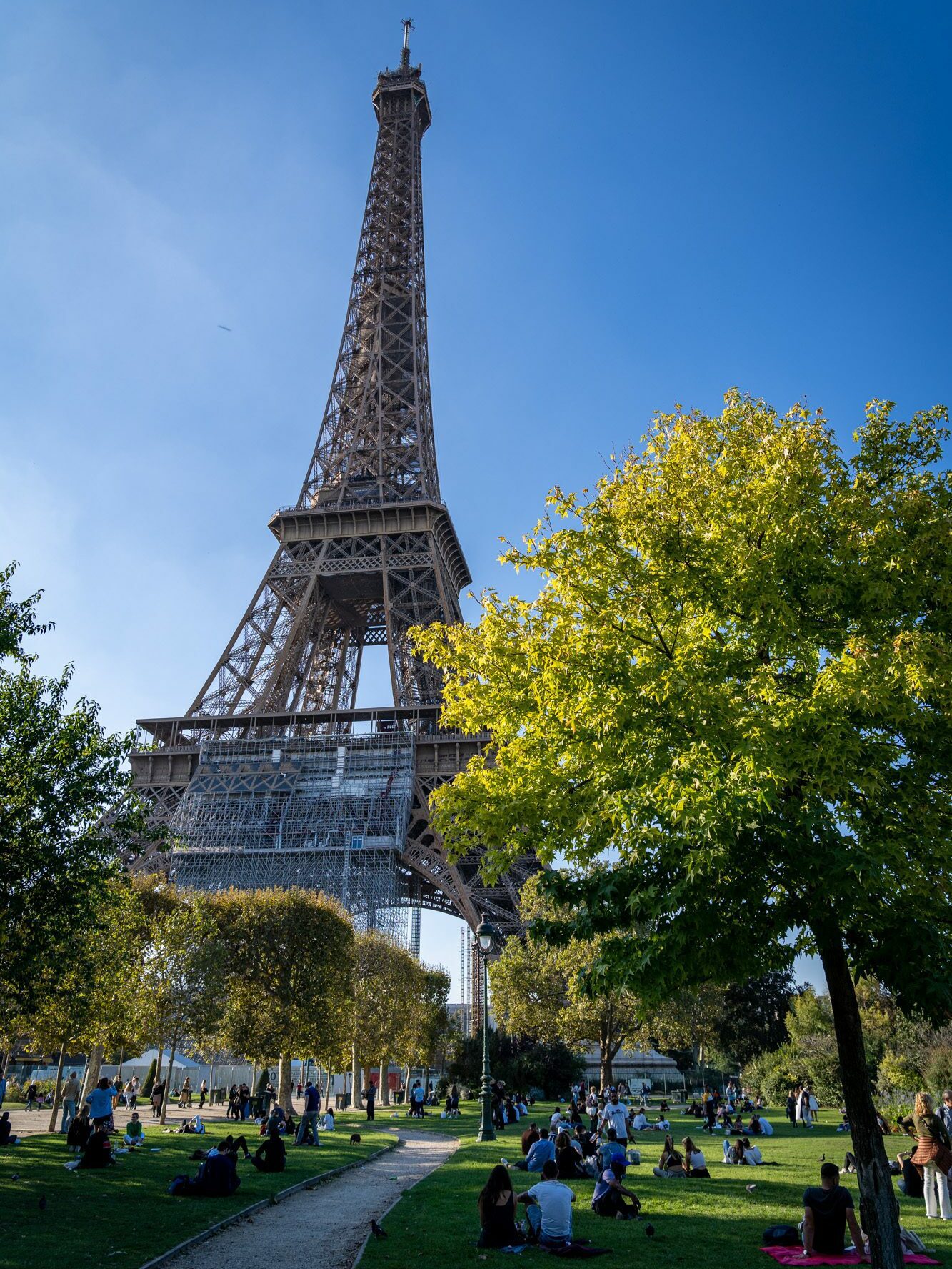
Now, one thing to watch out for here is the scammers. Specifically, the ones playing shell games and the like, which are all rigged against you by teams of 5-10 people all pretending to be playing along with you.
It’s wild that it’s legal, but please do not spend your money on those games!
Île de la Cité: Notre Dame and Sainte Chapelle
The relatively small island in the middle of the Seine – which is a natural island, it isn’t manmade – is where you’ll find two of Paris’ best and most well known churches.
One is the religious center of the city, and the other is the former royal chapel that, today, is my personal favorite church in the world (aside from la Sagrada Familia in Barcelona, which is a masterpiece).
Notre Dame de Paris
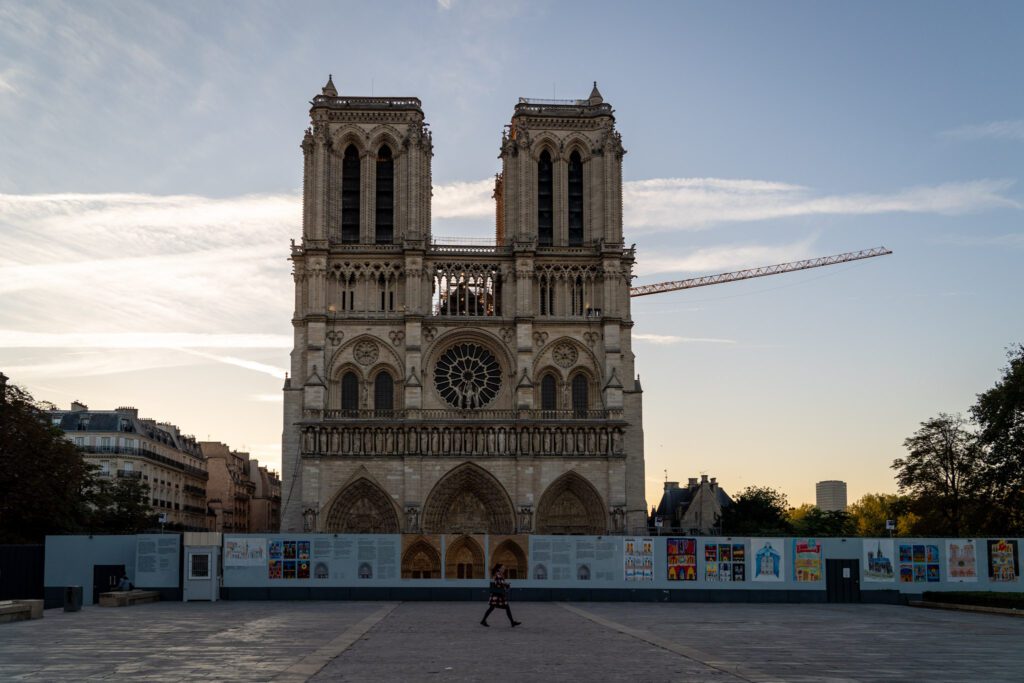
Let’s start with the former – Notre Dame Cathedral – which is arguably one of the most famous churches in the world.
Construction on Notre Dame began in the 12th century, and it has gone through several iterations to get to where it is today.
It’s an example of Gothic architecture (French Gothic, to be specific), and it’s worth walking along the river on either side to see the grandeur of the building from the outside (and those beautiful flying buttresses!).
Now, you might know that Notre Dame suffered a terrible fire in 2019 (you may remember all the social media posts showing their love for the church), and has been closed ever since as it was restored.
I’m here in Paris in the weeks before it opens back up, and every local I’ve talked to has expressed excitement.
It’s a magnificent church, with great stained glass (though, sadly, it will be mostly replicas as a result of the fire), and I would recommend going up to the bell towers if you can for the views over Paris AND the excellent views of the gargoyles, which play an important role in the Disney masterpiece The Hunchback of Notre Dame (the song “Hellfire” is still a banger).
How to visit: Great news here – It’s FREE to visit Notre Dame and go inside. However, you will have to make a timed reservation, which will almost certainly be competitive. More information here.
Sainte-Chapelle
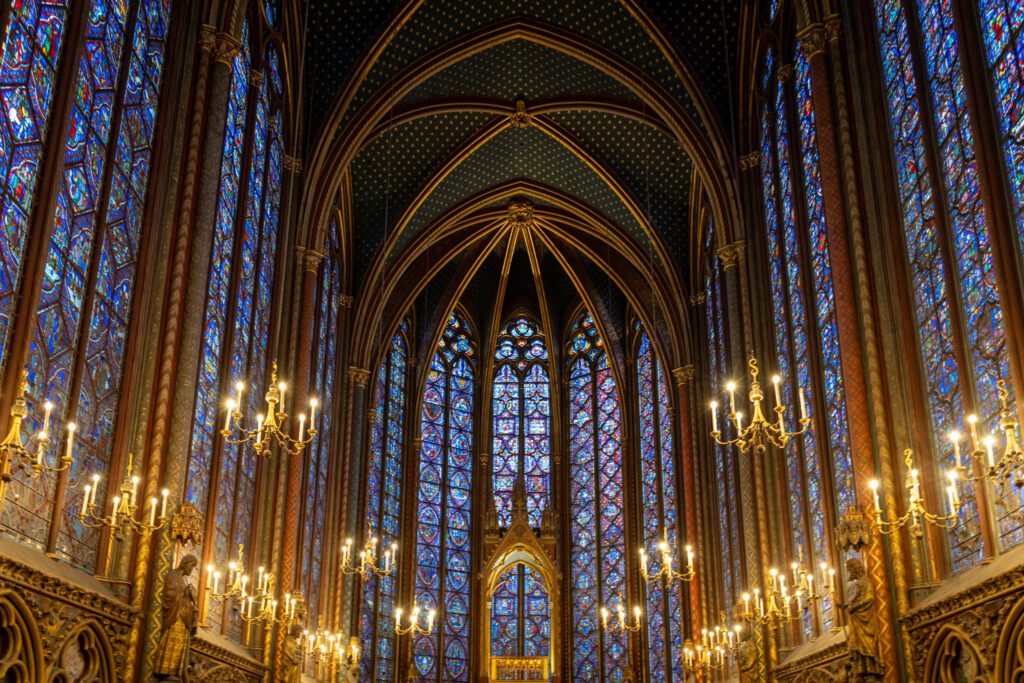
Until I revisited Sainte-Chapelle on this past visit to Paris, I forgot just how impressive the main chapel really is.
With its 1,000+ colorful stained glass panels depicting scenes from the Bible (don’t miss the helpful visual guide that’s inside the chapel, which will help you decode what you’re looking at), it’s one of the most stunning churches I’ve ever personally visited.
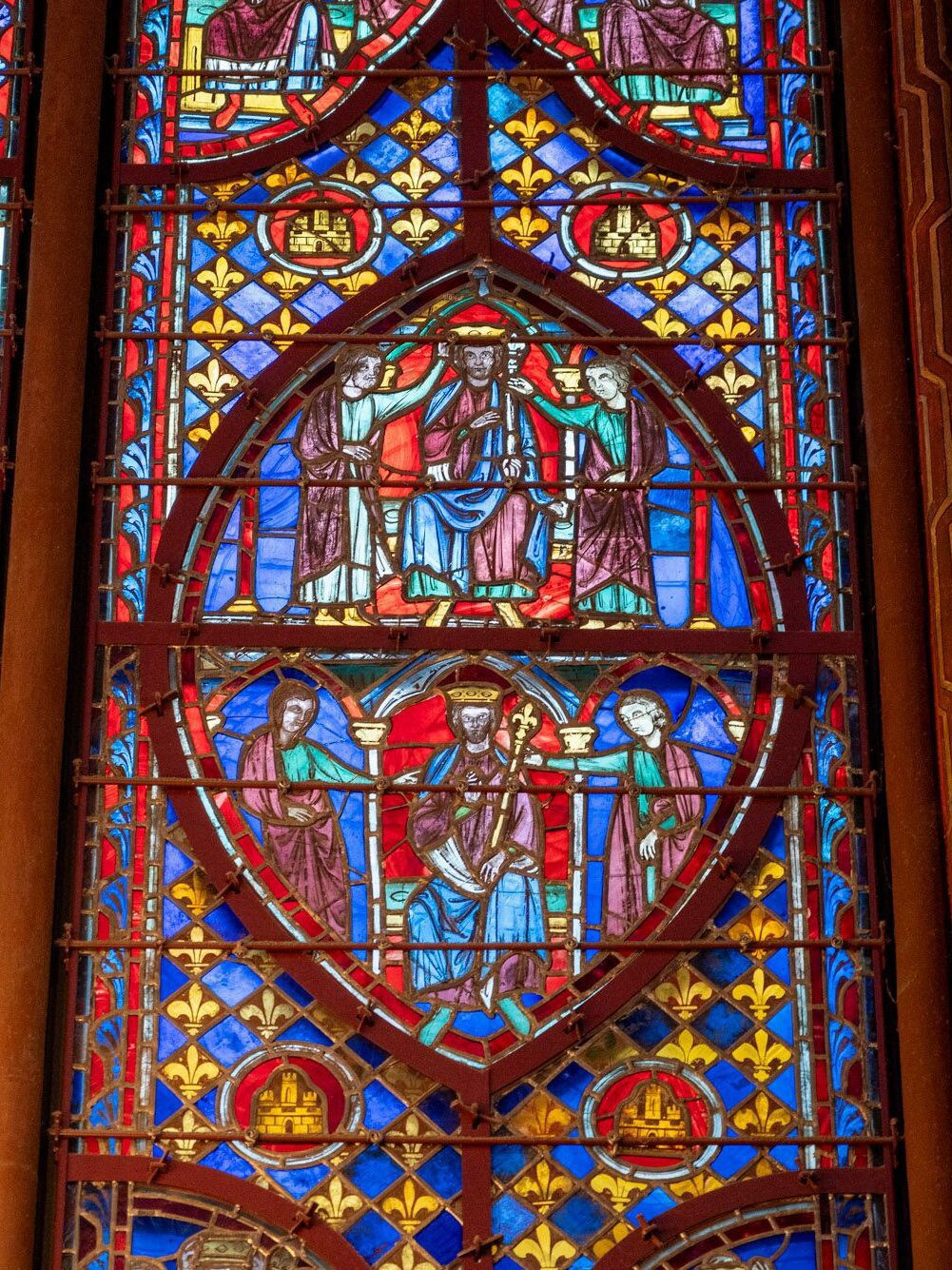
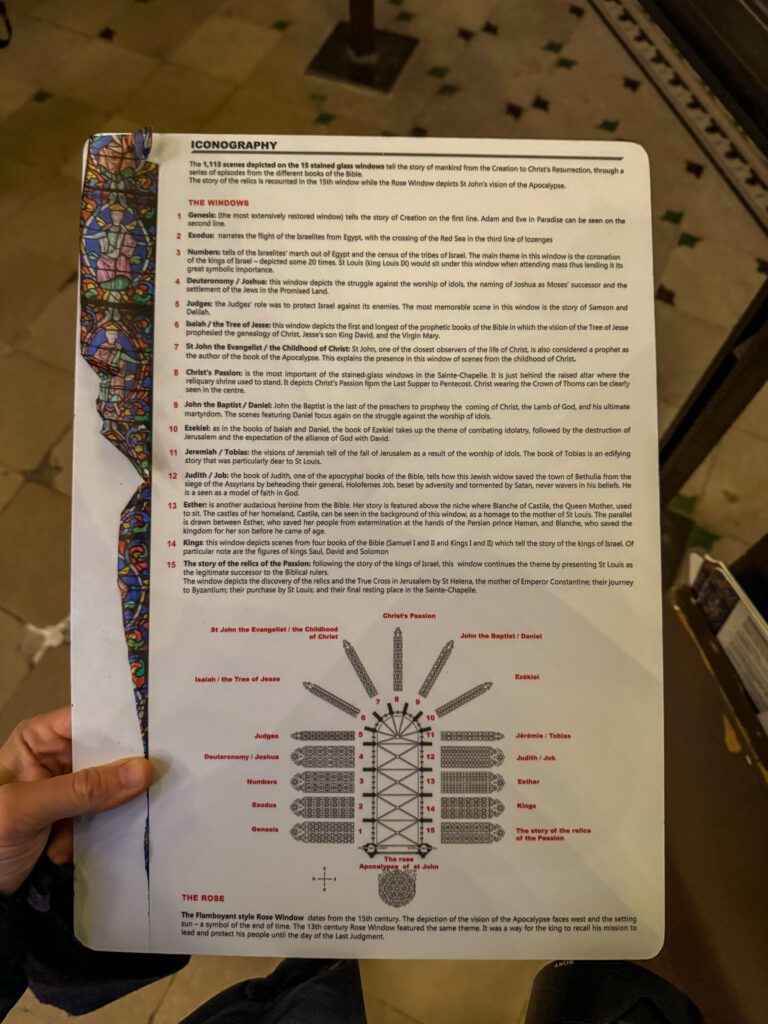
What is Sainte-Chapelle, you ask?
It’s the Royal Chapel that sat within the Palais de la Cité, the medieval palace that resided on the island in the middle of the Seine for a few hundred years until the kings decided to move elsewhere (somewhere safer after a few close calls with rebellions, something the French love to do!).
The most impressive part about the story of the Chapel, at least to me, is the fact that it went from an idea to finished in less than a decade (while Notre Dame, which is of course much bigger, took more than a century).
It’s a relatively quick visit – there’s basically only one room to see here – but it’s well worth braving the crowds, I think. I’ve done it three times now, and I will probably do it again in a few years.
It’s absolutely best on a sunny day around midday, when the sun reaches over the walls of the building surrounding the chapel and lights up the stained glass, but I was here on a dreary November morning when the chandeliers had to be lit because it was so dark, and I still enjoyed it.
How to Visit: This one is not free, and I HIGHLY recommend making a timed entry reservation in advance (usually a week or two in advance is fine – it does sell out).
Like many attractions in Paris, there are two lines to get into Sainte-Chapelle: the security line, and the ticket office line.
By buying tickets in advance, you get to skip the second one, and you’ll just have to line up for the security check (no big bags or luggage allowed, and nowhere to leave it).
You can pay a few extra Euros for an audio guide, but I didn’t think it was worth it here (and I usually love audio guides). Make your reservation here.
Other Things in Paris that We Love
In addition to those two main attractions, here are some of our other favorite things to do and see while you’re in Paris.
Learn About Impressionism at the Musée d’Orsay
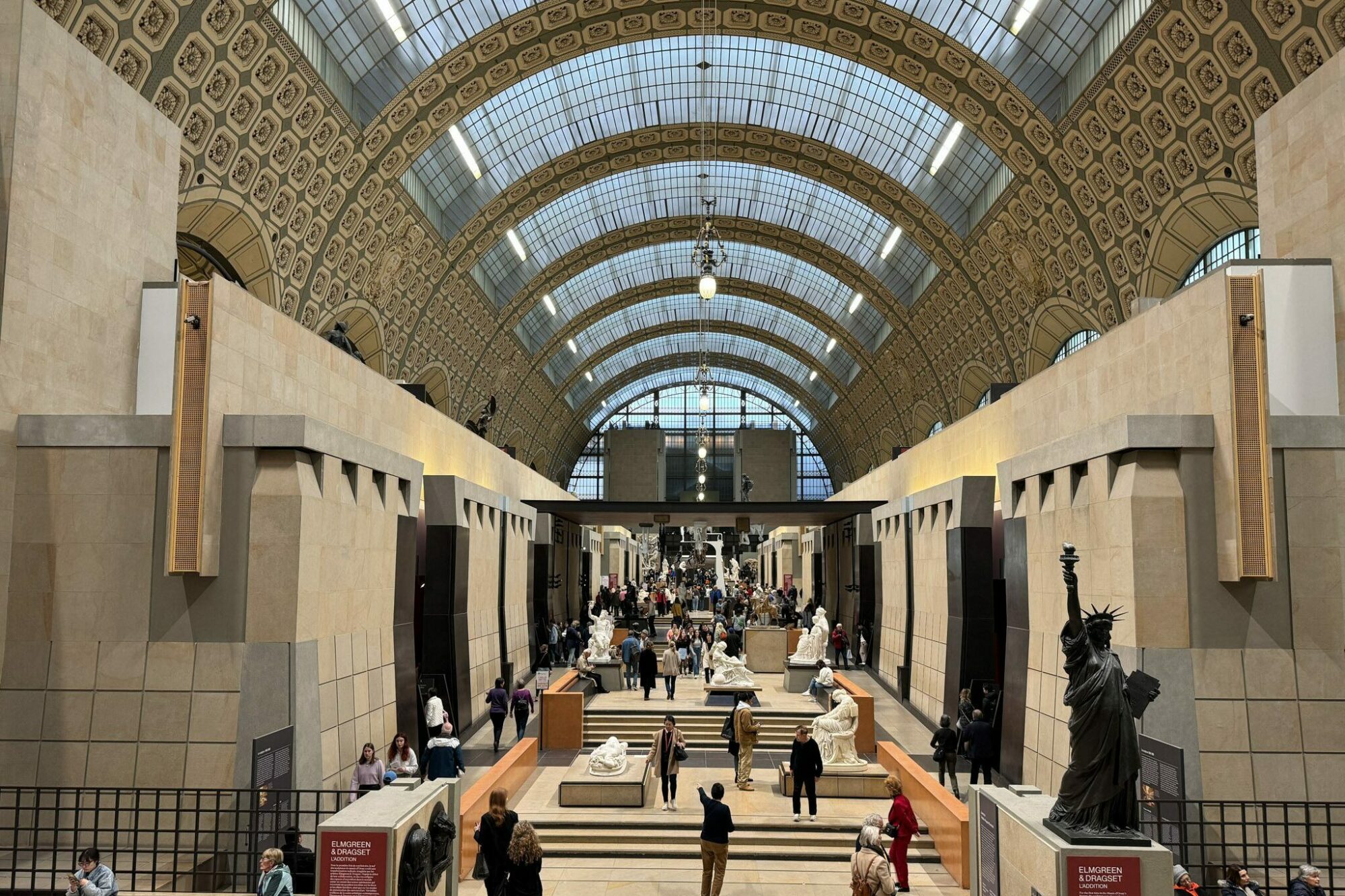
If you make me choose just one of the two main museums in Paris to visit – the Louvre and the Musée d’Orsay – I’m almost always taking the Musée d’Orsay.
It’s not that the Louvre isn’t worth seeing, it’s that it’s an overwhelming collection, and I just really love the impressionists, who were very much the bad boys (and a few ladies, too!) of the art world in their heyday.
Funny enough, they’re very much related – the collection that lives at the Musée d’Orsay today was originally housed at the Louvre before it was moved here when the train station was decommissioned (the building used to be a train station before Paris outgrew it).
I’m a sucker for landscapes and bright colors, which puts me right in the bullseye for the target audience of the Impressionists.
I had been to the Musée d’Orsay twice before my most recent trip to Paris, but it had been a decade since my last visit and I felt like it was time to revisit what I remembered as my favorite museum in Paris.
As I mentioned above, one of my biggest learnings about myself over the past few years of traveling is that I’m really bad at doing art museums by myself.
I really need the context and storytelling to capture my interest and help me understand what exactly I’m looking at.
Which is why I decided to do Carine’s tour of the museum, which I had tried to set up on my previous solo trip to Paris, but our availability didn’t overlap.
Carine was GREAT. She studied art history at the École du Louvre, which seems like the perfect person to teach about Impressionism and its rise in France.
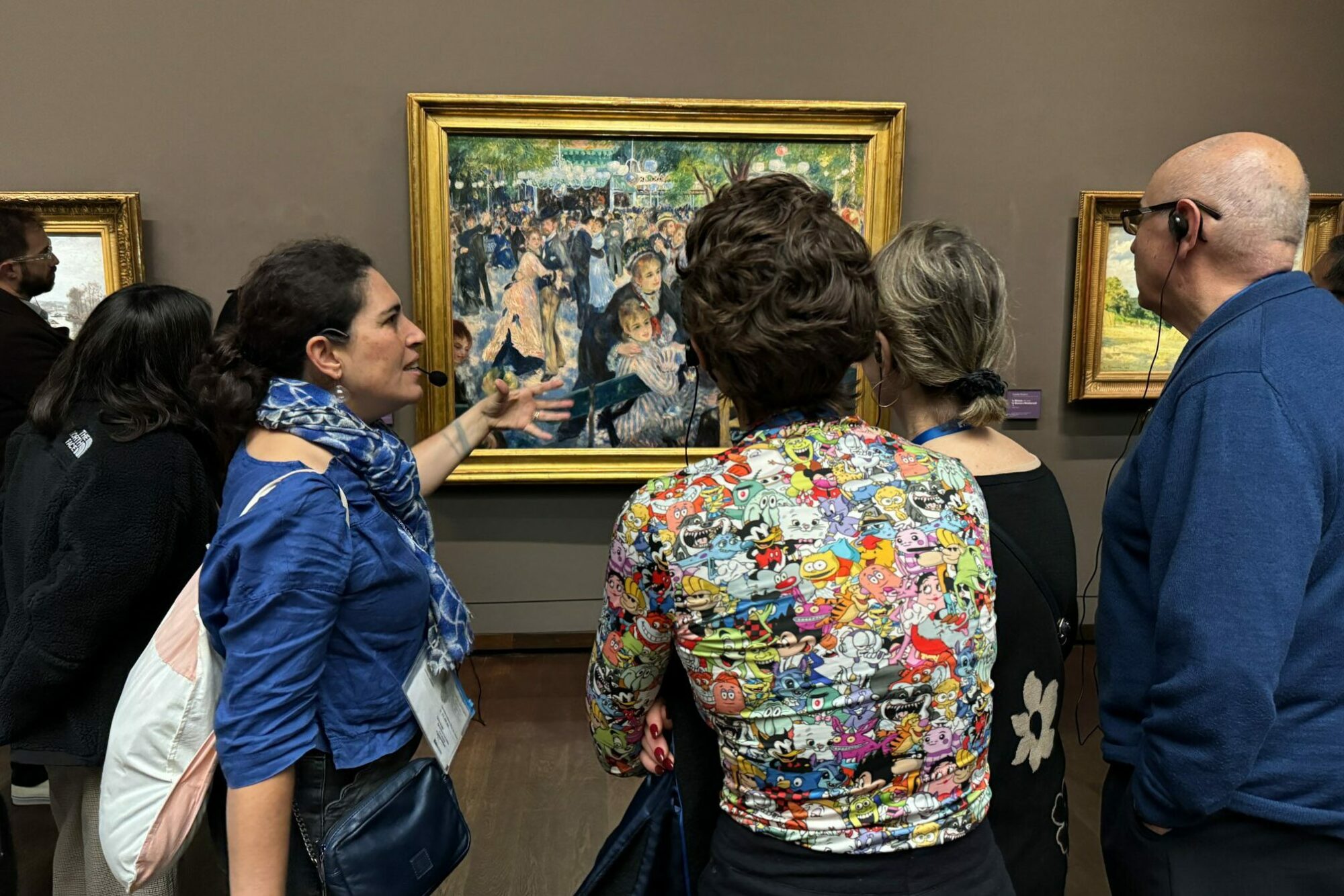
Over a couple of hours, she weaved a story that truly captured my attention.
She positioned the impressionists as the bad boys of their era who challenged norms and expectations in the Parisian art world, which was ruled by stuffy salons, to forge their own path and do what they wanted rather than what was expected of them.
Important note: Her tour DOES NOT include a ticket, so you will have to book a timed entry ticket for the time of the tour (she’ll give you more information on this).
If that tour isn’t available (she has limited availability because she does other tours of different aspects of Paris) then I’d do the Walks tour of the Musée d’Orsay, which gets good reviews (and is a tour company I trust based on my tours with them across Europe in Spain, Italy, and France).
As you make your way through the museum, you’ll get to enjoy some of the best impressionist art ever created. You’ll feast your eyes on Cézanne, Degas, Monet, Van Gogh, and many others.
If you visit on your own, make sure not to miss the Bal du Moulin de la Galette by Pierre-August Renoir with its energetic, lively atmosphere of a ball in Montmartre, Edouard Manet’s quizzical Olympia, Vincent Van Gogh’s Starry Night (if it’s on display), and Claude Monet’s Blue Water Lilies.
Though my favorite discovery was Pissarro, whose use of color captured my eye from across the room.
And the incredible use of light in Monet’s early La Pie (The Magpie), which depicts a winter landscape with sunlight poking through the bare trees and dancing across the snowy landscape.
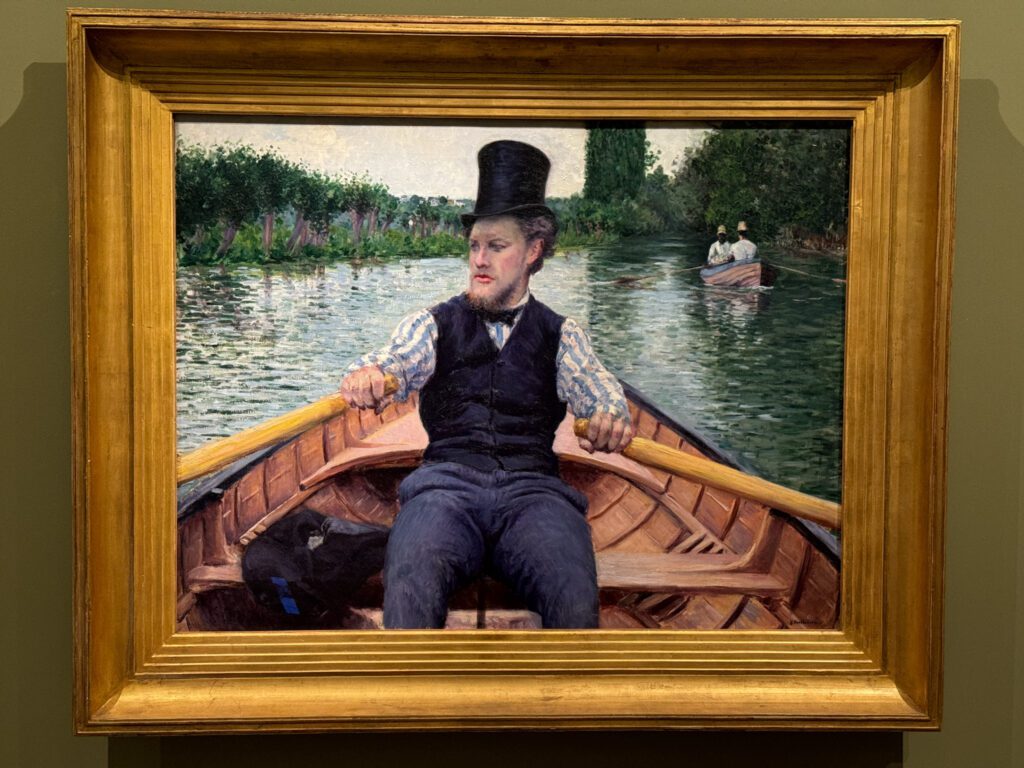
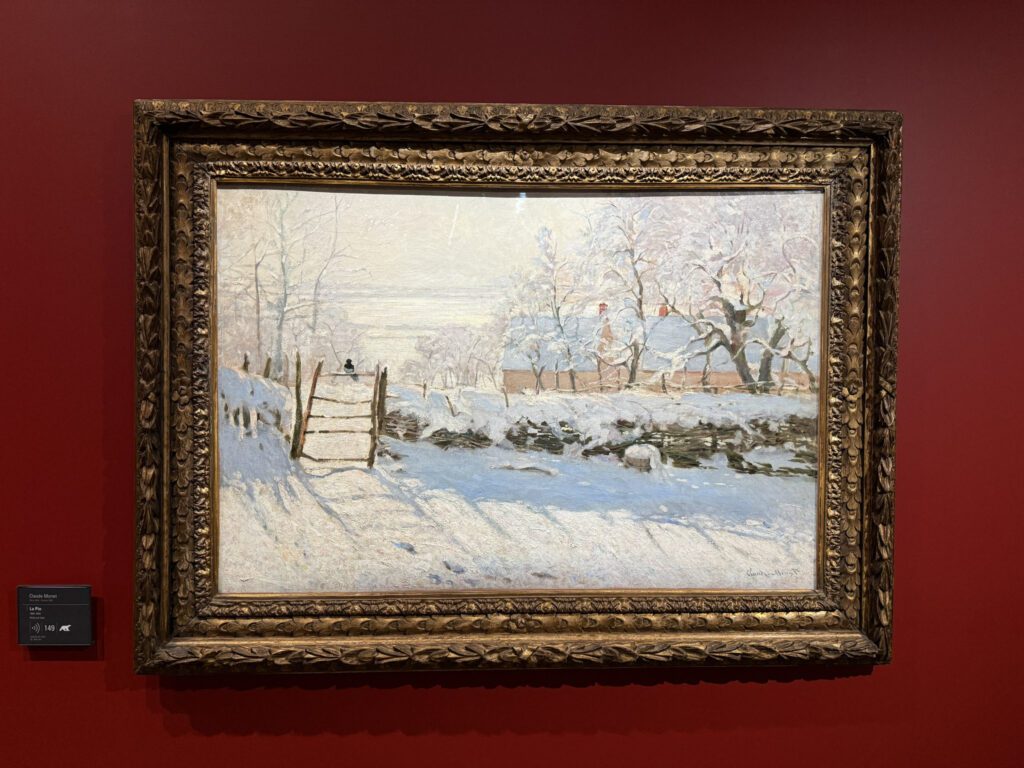
If you don’t do the tour with Carine, I highly recommend the audio guide to give you at least a little bit of the context and history. And book your tickets in advance to skip the ticket line!
How to Visit: As usual with the main attractions in Paris, it’s worth booking your visit in advance so that you can skip the ticket line (you’ll still have to wait in the security line). Make your reservation here.
The museum is closed on Mondays. If you want a quieter visit, go on Thursday evening, when the museum is open until 9:45 pm.
Cover More Ground on an E-Bike Tour
The thing that sets Paris apart from other famous European cities like Rome or Barcelona is that the slice of Paris that you’ll visit as a tourist is actually pretty big compared to those cities, which sprawl far beyond the boundaries of the “tourist zone” (for lack of a better word).
That’s not to say that Paris isn’t sprawling – it definitely is – but it is to say that it’s far too big to cover in a walking tour.
Which is why I was intrigued by this highly rated E-bike tour, which I ended up doing on my first full day in Paris on my latest visit.
First of all, let’s talk about cycling in Paris.
I was fairly terrified about this, considering I’m a wary urban cyclist (riding alongside cars scares me).
After doing this tour and spending a few hours riding around Paris on their nice, powerful e-bikes, I’m far less apprehensive about it.
This is a great introduction to the city, and over four hours you’ll get a sense for Paris’ geography, history, and culture, with a nice story that is told over the course of the tour to help you get the lay of the proverbial land.
It’s a mix of the main sights (the Louvre) and some off-the-beaten-path parts that you’d never discover on your own, but are absolutely an important piece of the story that has shaped Paris (the Roman ruins in the Latin Quarter / Saint-Germain).
It’s a nice way to spend a few hours immersing yourself in the city, seeing some places that you’d never discover on your own, and riding through back alleys and grand boulevards with a guide to help you make sense of it all.
Take a Walking Tour to Go a Level Deeper
Over the past few years, we’ve come to the realization that walking tours are often our favorite way to get oriented in a new city for a few reasons.
First, you get a crash course in history and culture, which is a valuable baseline that will make the rest of your trip more enjoyable.
Second, you get to spend a few hours with a local who will give you all sorts of tips about what to eat, drink (and see), and specifically where to find the best version of said things.
Last, but not least you’ll discover places that you definitely would never have found on your own.
We almost always start our trip with a walking tour for these reasons (and the fact that it’s helpful to get outside and move to combat jet lag).
Like we mentioned above, Paris is slightly too big to really cover a bunch of ground on foot, but what you can do is explore a far more targeted slice of Paris with a local to get a deeper understanding of the culture and history of a time period or neighborhood.
I have done several of this type of tour over my trips to Paris.
Here are three tours that I’d look at, two of which I have personally done and enjoyed.
The French Revolution Tour
On a trip to Paris a few years ago, I discovered Thierry’s tours near the end of our visit, and wasn’t able to make the timing work with our schedule.
I bookmarked them and saved them for a future trip and, on this most recent trip, ended up doing two of his tours.
Thierry is a (very passionate) historian who will dive into French history’s important moments – in this case, the French revolution – and spend a couple of hours teaching you the basics of what happened, who was involved, and how it affects France today.
He’s an engaging storyteller, and this tour in particular was a favorite because I, an American, didn’t learn that much about the French Revolution in school, so this filled in a lot of gaps.
I also did his Napoleon tour – I’m particularly interested in Napoleon and his impact on Europe’s modernization and liberalization – and found it to be a great way to set the record straight for people who didn’t learn anything other than “short dictator” in school.
A Walk in Medieval Paris
This walking tour around Medeival Paris is with Walks, one of my favorite tour companies in Europe with whom I have done multiple tours, including one in Paris (though, for transparency’s sake, not this one).
I had this tour on my radar for my last trip, and it ended up getting cut to do other things (mostly drink coffee, walk, and eat more gluten free pastries).
It focuses on the medieval core of Paris, which is Île de la Cité and the area around it, and includes entry to both Notre Dame and Sainte-Chappelle, two must-see churches in Paris (I think).
It will give you a nice baseline for understanding the city, its layout, and its history.
A Tour Through the Artists of Montmartre
I did this great tour of Montmartre on my recent trip, where I actually stayed in Montmartre for half of my time in Paris, and it was an informative dive into what makes Montmartre special (beyond the Moulin Rouge).
All sorts of incredible personalities lived in Montmartre, which was originally a village on the hill outside of Paris’ city limits, including many of the impressionists (including Van Gogh) and Pablo Picasso.
This tour offers a fascinating deep dive into the history and culture of Montmartre, and takes a people-first approach to history that I liked.
The Rodin Museum
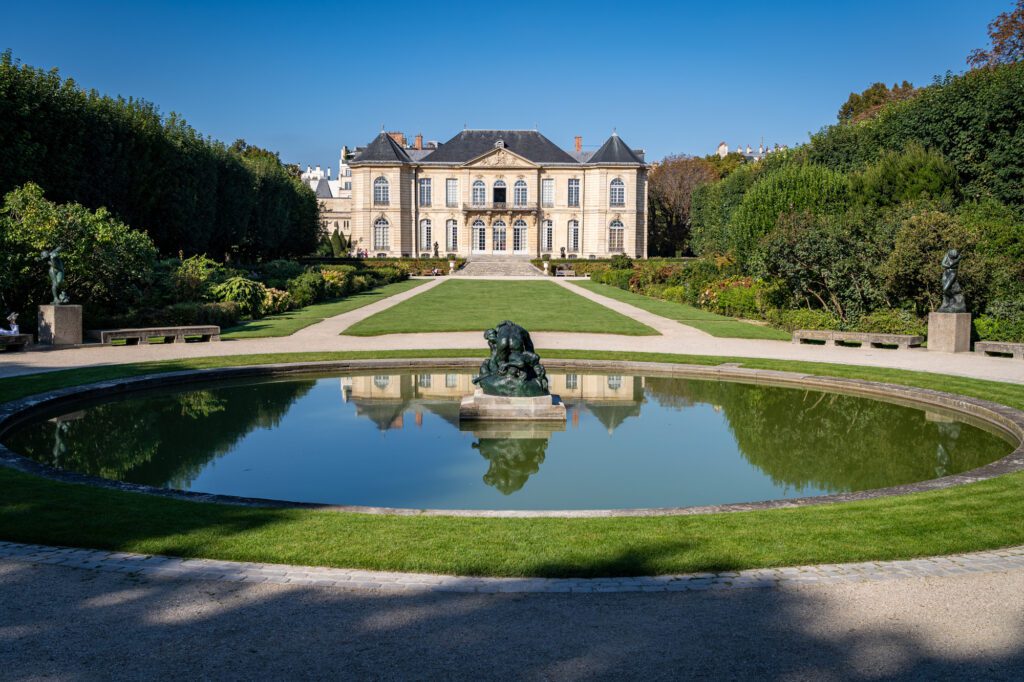
The Rodin Museum is one of my favorite museums in Europe.
Not because Rodin was an incredible artist – though he definitely was – but because rather than covering a vast swath of history with artifacts from hundreds (Musée d’Orsay) or even thousands (the Louvre) years of history, this museum is laser-focused on one man, his art, and his life.
The audio guide will be your best friend here, because it will take you on a journey through Rodin’s life, help you understand his process for creating his sculptures and his fascination with the human form, and culminate with some of the most famous sculptures in the world – The Thinker and the Gates of Hell.
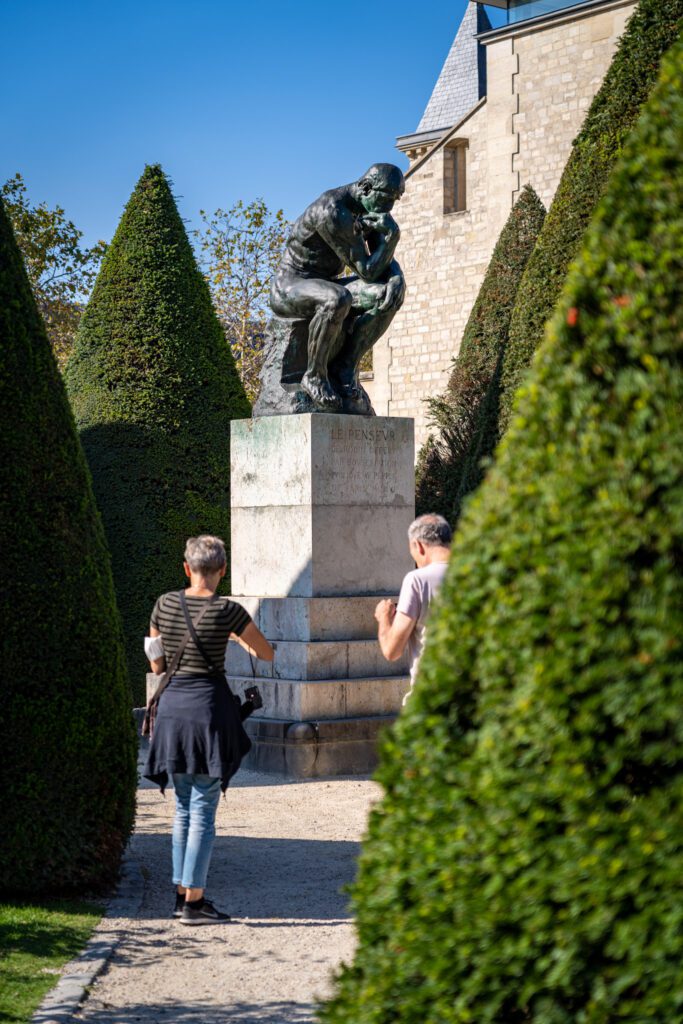
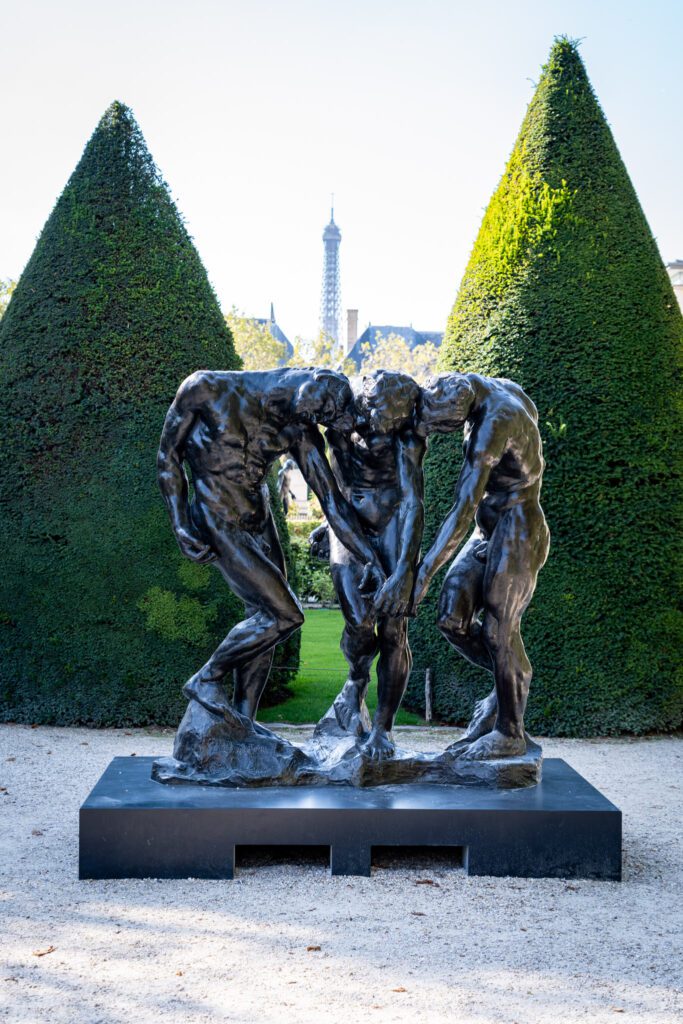
One of my favorite things that I learned here is that Rodin would often use the same form (meaning the same human shape) in multiple works.
If you look closely, you’ll see the same poses across multiple works, which is kind of interesting.
It’s a different approach to a museum, and I enjoyed the focus and contained story that it tells. It’ll take you around two hours or so, depending on your pace, which is a breeze compared to other Parisian museums.
How to Visit: Book a timeslot in advance here to skip the ticket line. Definitely worth getting the audio guide for this one, though it’s the most expensive audio guide I’ve ever seen at €6.50 (it’s basically an iPad, though) and it’s more like a multimedia guide.
You can get a combined ticket with the Musée de l’Armée, if you’re planning on doing that, which will save you €6 (so you can spend it on the audio guide at the Rodin Museum!).
Explore Paris’ Coolest Neighborhoods
Paris has a bunch of cool neighborhoods, and one of our favorite things to do is to spend a few hours wandering through a new neighborhood, stopping into shops that look interesting, sitting on a park bench and doing some people watching, and grabbing coffee on a sunny (or, in November, drizzly) terrace.
Here are two neighborhoods that we really like, and some of our favorite spots in each.
Montmartre
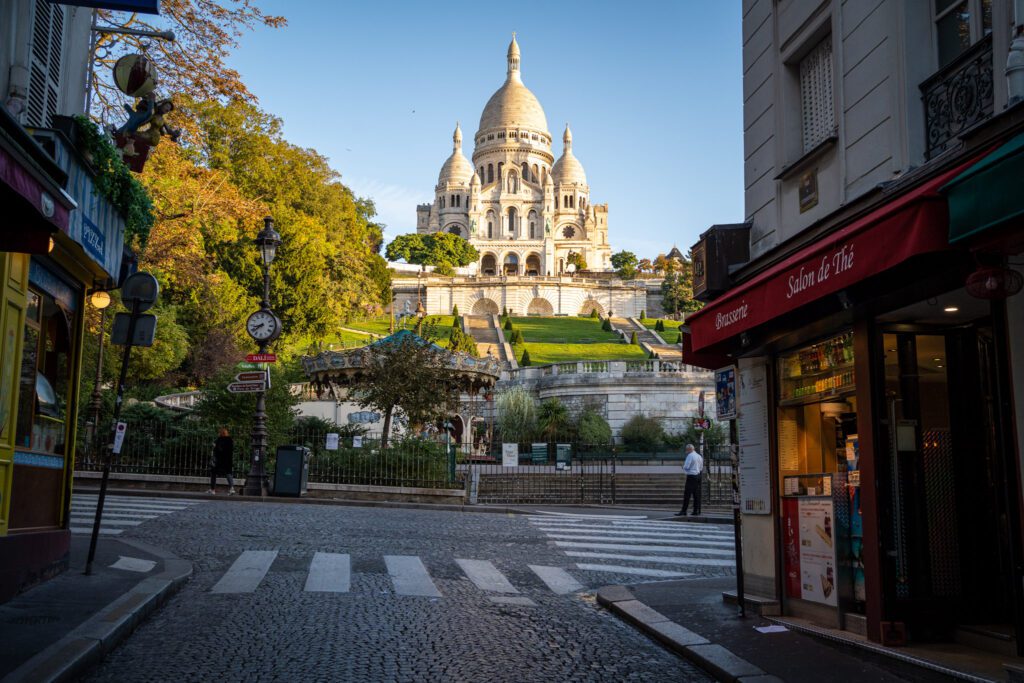
It’s not hard to see why artists have flocked to the cobblestone streets of Montmartre, which is perched on a hill overlooking the rest of Paris, for centuries.
Between those cobblestones, the greenery, the elegance of Sacré-Cœur (the white church on top of the hill), and the views out over Paris, it’s one of the most picturesque slices of the city.
Until the 19th century, Montmartre was actually a completely separate town (though, it was adjacent to the borders of Paris).
It was a small village on the hill with some shadier parts at the base of the hill (where the Moulin Rouge is today), some green open spaces, and a bunch of windmills that were used to grind flour for the population of the city.
In the mid-to-late 19th century, it was famous for the soirees that were thrown on weekends, when wealthy Parisians would escape the city and amble up the hill to drink and dance in the gardens that provided a much-needed escape from the urban environment a few blocks away.
If you go to the Musée d’Orsay (and you should!) and learn about impressionism, you’ll see multiple depictions of this phenomenon, most famously Renoir’s Bal du moulin de la Galette.
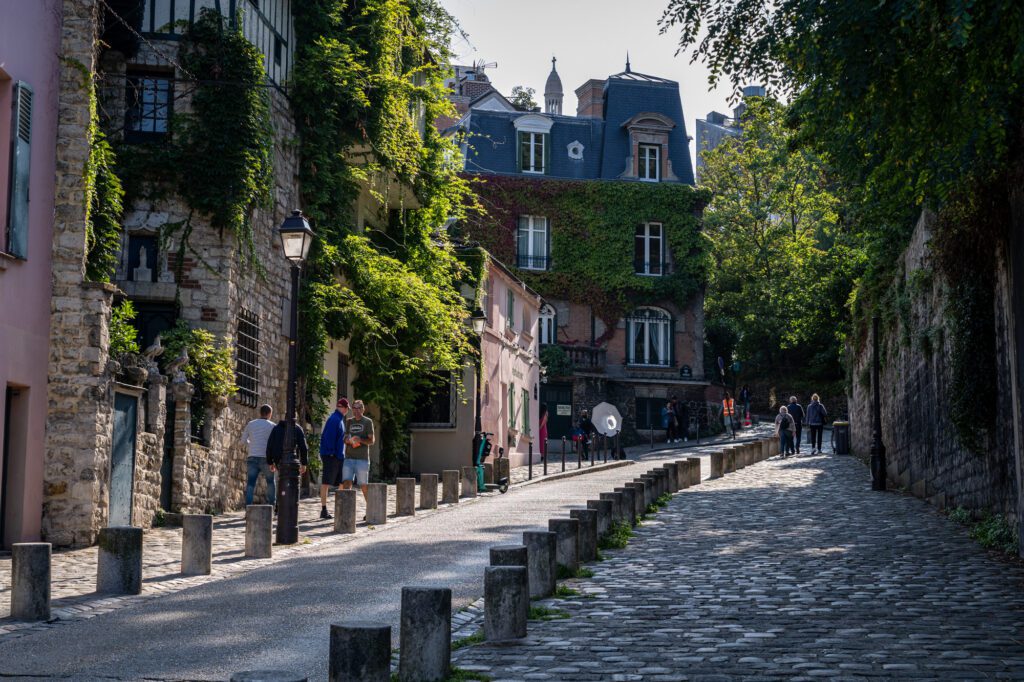
It has also gained the reputation for being the home of the artists in Paris, with Vincent Van Gogh, Renoir, many other artists in the impressionist movement, and even Pablo Picasso having lived in Montmartre for some period of time in the late 19th and early 20th centuries.
Similar to Le Marais, Montmartre escaped the redevelopment projects that came with Napoleon III (again, not THAT Napoleon, but his nephew) that leveled huge swaths of the city to modernize it and turn it into the city you see today, with grand boulevards and wide open spaces (rather than narrow cobblestone streets).
Mostly, that’s because it was outside the boundaries of the city at that time.
The result is an uber charming neighborhood full of cobblestones, narrow winding streets, and excellent views out over Paris (which only get better the further up the hill you venture).
It’s charming. It’s romantic (especially before or after the bulk of the tourists arrive or leave).
And it’s easy to see why it has become a staple of many people’s itineraries (including ours).
Here are a few of our favorite spots in Montmartre.
Sacré-Cœur: At the top of the hill is the white church on the hill – Sacré-Cœur – which boasts one of my favorite views in Paris.
At the top, you’ll have an up close and personal view of both Sacré-Cœur itself, and the view from the platform just below it, which looks back towards the Seine and the center of Paris.
You can also climb the dome of Sacré-Cœur for even better views – it’s 200+ steps, and like most church towers, they’re narrow and claustrophobic.
Montmartre Walking Tour: As mentioned above, I did this tour on my recent trip and it was a great dive into what makes Montmartre special (beyond the Moulin Rouge). Highly recommend!
Clove: Tucked away on a side street a block away from Sacré-Cœur, you’ll find one of the best coffee shops in Paris.
I spent part of a morning here chatting with the owners (one of whom is American) and getting to know their philosophy around coffee. They work with various European roasters that change every so often, and one of the things I noticed was the beautiful ceramics.
When I asked the barista about them (and complimented the beautiful drinkware), she informed me that she had made all of them herself, which I think is a lovely touch.
If you’re a coffee nerd like me, go here and have them help you explore some new coffees!
La Manufacture de Sans Gluten: This tiny gluten free bakery makes, hands down, one of the top three gluten free croissants I’ve ever eaten (they keep them in a warming case, which helps a lot). Flaky, buttery, and light – which is hard to come by when we’re talking about gluten free pastries.
They’re pricey, but they’re pretty clearly the best gluten free pastries in Paris, so…worth it!
Pain Pain: If you’re not gluten free, this bakery came highly recommended by the tour guide of the aforementioned walking tour (and a couple who I met on a different tour who was rating their favorite bakeries in Paris). I stopped by to check out the selection, and was drooling at all the options, sweet and savory, on display.
There are two restaurants in Montmartre that came highly recommended by two locals I met over the course of my most recent trip (neither are great for Celiacs, unfortunately).
They are Bouillon Pigalle, which is very popular (especially with tourists) but is still a good value and serves authentic French food (but be prepared to wait in line during peak times), and Crêperie Brocéliande, which is the place to go to try gallettes, a savory buckwheat crepe hailing from Brittany that is generally served with cider.
Le Marais
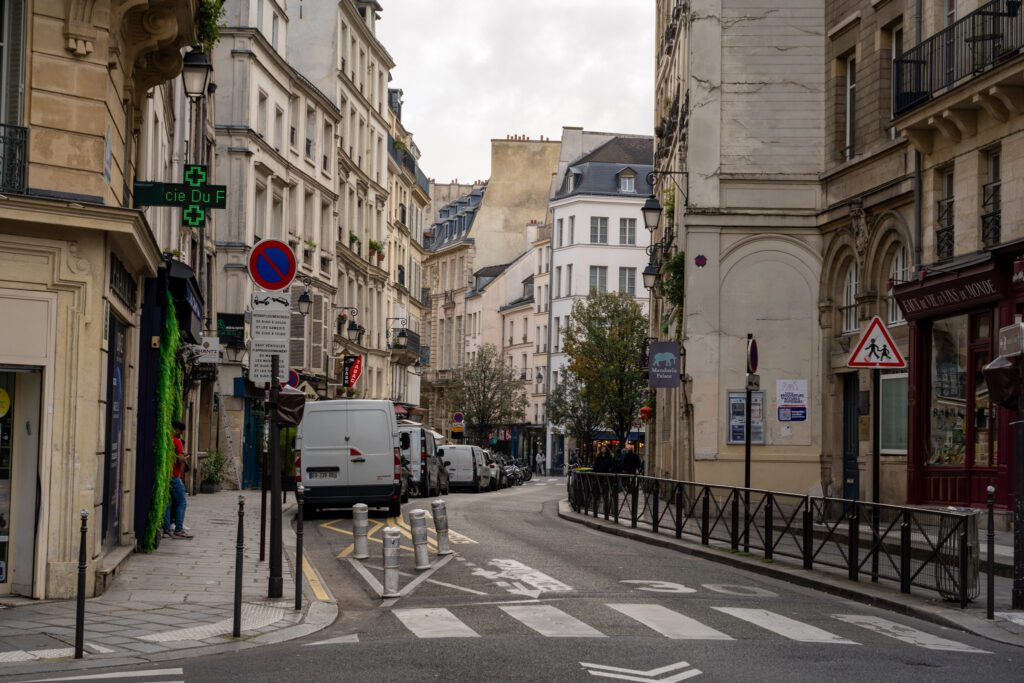
To the extent that a “Historic Center” exists in Paris, like it does in many Italian cities, Le Marais is it.
It obviously looks very different than it did during that time period, but you still have pockets of narrow alley-like cobblestone streets and pedestrianized stretches.
This site on the north bank of the Seine was the original site of Paris, roughly.
In the 19th century, Napoleon III – the nephew of the Napoleon you likely are more familiar with – reorganized the city of Paris to move from a medieval city, with narrow winding streets, to a modern city with wide open boulevards and a more orderly planning system.
During this process, roughly 60% of the city was leveled to make way for the more modern way of doing things.
Le Marais is one of the only neighborhoods where you can still find those pockets of the medieval city in between the grand boulevards cutting though the arrondissement.
Today, you still have places that have survived, like Places des Vosges, which was created in the 17th century and still has the same footprint as it did hundreds of years ago (plus, Victor Hugo lived on the square!).
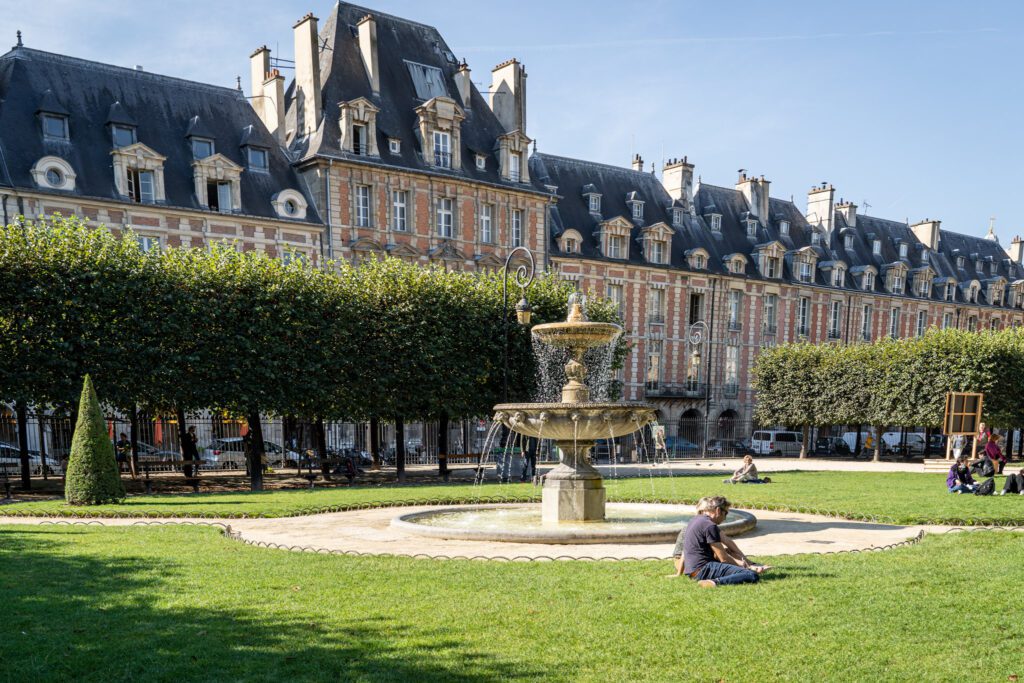
We will say that we generally have enjoyed the part of the Marais further from the river, near Arts et Métiers and the Marché des Enfants Rouges, where you’ll find some of our favorite coffee shops, places to shop, and bars and restaurants galore.
Here are a few of our favorite spots in Le Marais.
The Marché des Enfants Rouges: This is an open air market that is full of bars and restaurants and is packed full of people around lunchtime basically everyday.
Is it firmly on the tourist radar? Absolutely. Does that mean you shouldn’t go? Absolutely not. If you have the time, you should definitely swing by for lunch on one of your days in Paris.
Kawa: This coffee is so good, I’ve ordered it to be shipped to me here in the States. Multiple times. Last time I was in Paris, I found myself here a couple of different times, and it didn’t disappoint.
If you’re a coffee nerd, they have different coffee options prepared as either filter or espresso, along with a huge selection of both beans to take home, and brewing equipment.
Place De La République: A bustling square with an important metro station and a big monument in the center. A corner turns into a skatepark in the afternoon, which makes for some really good people watching.
Square du Temple – Elie Wiesel: We’re big fans of this green space, which is a bit of an oasis in the middle of the most bustling part of the neighborhood.
Sainte-Chapelle: Technically, this cathedral is in the 1st Arrondissement (because it’s on the Île de la Cité in the middle of the Seine), but we’re including it here because it’s two minutes from the 4th Arrondissement.
If you’re into stained glass, DO NOT MISS this place. It’s incredible.
Book your tickets in advance here, and be prepared to wait in the security line despite your pre-booking if you’re there in the summer.
The Musée de l’Armée (and Napoleon’s Tomb)
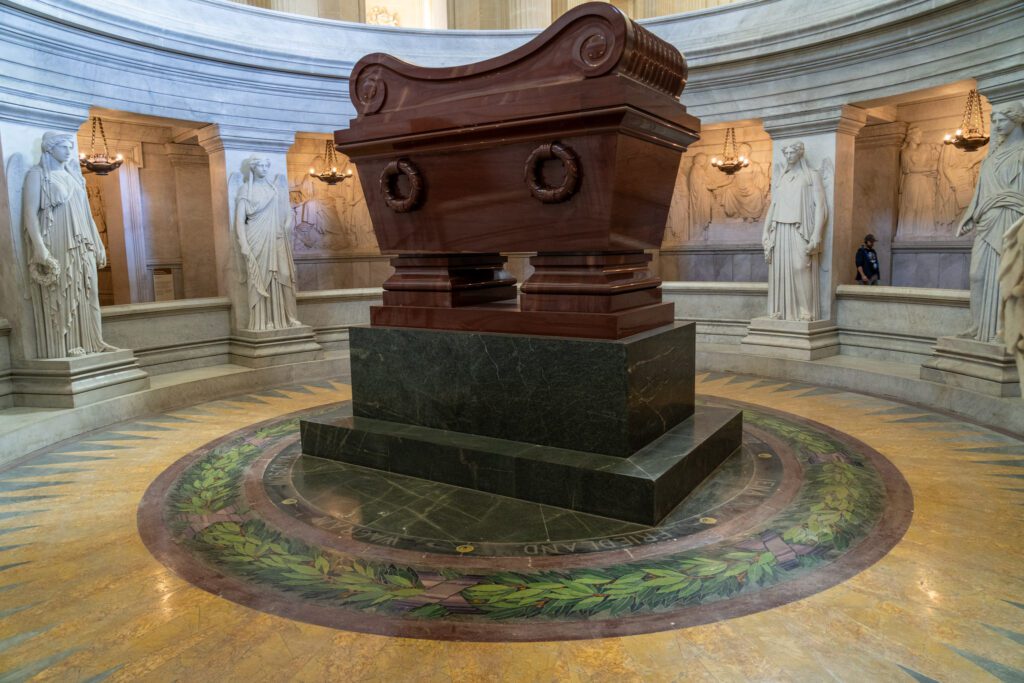
This was an extremely pleasant surprise from a trip to Paris a few years ago.
The Musée de l’Armée is part of the Invalides complex in the 7th Arrondissement (the big gold dome you can see from the Tuileries), and has two pieces; the museum and the tomb.
The tomb is inside a former church that has been transformed into a sort of mausoleum that houses some of France’s most prominent figures from its history.
As far as tombs go, Napoleon’s tomb is the main attraction, but there are also other tombs.
The marble panels depicting his victories over his reign are cool, and the sarcophagus itself is made of a red stone that feels very unique. It’s all placed in the crypt of the former church, with an open ceiling that looks all the way up to the dome.
Contrary to what you might think, the ornate, over-the-top tomb was not, in fact, commissioned by Napoleon, but by a French monarch (the last French monarch, in fact) after his death.
While the tomb is cool, you’ll probably just take a walk around it, marvel at the details, and be done in 30 minutes or so.
Which brings us to the real treasure here: the Musée de l’Armée.
I don’t know what I was expecting, but the reality blew my expectations away.
It’s a treasure trove of artifacts and explanations about the French military and its structure, evolution, and participation in conflicts from medieval times through World War 2.
It’s packed full of information, and is worth lingering on if you have extra time in your itinerary and are interested in the military history of France.
How to Visit: The Musée de l’Armée is open almost every day from 10am to 6pm (January 1, May 1, and December 25 are the only exception).
Book a timeslot in advance here to skip the ticket line. Full price is €15, but it drops to €10 for a night visit on the first Friday of the month (6pm-10pm).
You can get a combined ticket for the Musée de l’Armée and the Rodin museum for a nice discount if you’re planning on doing both.
Take a Day Trip to Versailles
Versailles is, by far, the most incredible royal palace I’ve ever seen (and I’ve been to quite a few at this point).
The amount of gold on display rivals St. Peter’s Basilica (and serves the same purpose; the projection of power), and it’s hard to believe that someone actually lived here.
Which brings us to a key question: what was this place?
Basically, King Louis XIV was getting sick of living in Paris amongst the peasants and decided to commission his own royal palace (on the site of an existing hunting lodge) outside the city, removed from the squalor of his people.
Which, OOPS, sort of continued the French monarchy on a path to ruin because it showed that the king wasn’t a man of the people AND the monarchy was broke and couldn’t really afford a new royal palace.
The former royal palaces are the Louvre, which was turned into a museum, and the Palais-Royal, which was given to a previous king (and Louis XIV abandoned it, giving it to his somewhat debaucherous younger brother).
Anyway, Versailles is worth the better part of a day of your time to wander its halls marveling at the architecture, art, and, well, gold.
Definitely don’t miss the gardens either, which are equally as impressive (we think) when things are in bloom and the fountains are fountaining.
I should say here that we’re generally not a fan of the palaces of rich people because they’re usually not particularly interesting, and we don’t need to see some old king’s fancy art collection. Which at least partially applies to Versailles.
The other thing to know about Versailles is that it’s a short (90 ish minutes each way) train ride outside of Paris, which means that you’re going to spend a bit of time in transit to get here.
Last, but certainly not least, is that Versailles is going to be crowded AF, and there’s basically no way to get around it. Especially mid-morning when all the tour buses show up.
The point here is that it’s very much not worth it if you either:
- a) don’t care about a decommissioned royal palaces that are just one big obscene display of wealth
- b) you have less than four or five days to spend on Paris (with less than that, we’d argue you’re better off staying in Paris)
- c) you’re not interested in being one of 200 people in a room with a capacity of 50 people looking at a painting of the aforementioned rich guy
We’re not saying we hate Versailles at all.
It’s actually an interesting place from a historical and cultural perspective because it was one domino on the road to the French Revolution, but it is very much a busy tourist attraction, and you should set expectations accordingly.
Whether or not to do a tour here is somewhat more complicated than museums in Paris.
A tour means you’re going to be on a strict timeline and, unlike a museum tour that ends inside and affords you the ability to continue exploring, a tour here likely includes transportation from Paris.
On the other hand, the security lines at Versailles are LONG, and guided tours with a licensed guide get to use a separate entrance with shorter security lines.
I have a couple of recommendations for tours of Versailles that I had bookmarked for my recent trip to Paris (I ended up cutting Versailles because I had done it multiple times before and it was November, which means the gardens are gray, drizzly, and dead).
I think they offer a somewhat unique approach to visiting Versailles.
The first is this full day bike tour, which spends a full day out at Versailles and includes some time exploring the less-visited nearby sights, including the town of Versailles itself.
Being on a bike makes it a little more feasible to cover this much ground (you’re only on a bike outside the palace and gardens, if you’re wondering).
For what it’s worth, that would be my top choice if I were going to do a tour of Versailles because I think it’s a unique approach to visiting one of the most popular tourist attractions in France.
The second is this more traditional tour of Versailles with a Parisian tour company (which I appreciate).
It includes transportation to and from Paris, but it does end at the palace (which gives you more time to explore if you want) and spends a fair amount of time (three hours or so) on the palace and gardens.
Some tours try to do it in an hour and a half, which I think is madness.
The palace at Versailles is closed on Mondays, so plan accordingly.
Getting to Versailles
To get to Versailles from Paris, the easiest route is to hop on the RER-C.
The line runs along the Seine (which means it’s easily accessible). Take it to the stop called “Chateau Rive Gauche” (here on Google Maps).
From there, it’s a short walk to the entrance. This route takes roughly 90 minutes, maybe a bit shorter depending on the day and where you’re riding from.
However, the RER-C has some notable downsides, like the fact that it’s subject to closures and delays.
Another option is catching the N Train from Gare Montparnasse, which is MUCH faster but takes you to a different station (Versailles-Chantiers) that means a longer walk to the palace.
There’s also an L Train from Gare Saint-Lazare to Versailles Rive Droite (you need to make sure you get on the line that goes there) that gets you to the chateau in a similar manner, but is probably less convenient unless you’re staying in the 9th or Montmartre.
Tips for Visiting Versailles Independently
Definitely book tickets in advance here and try to get either an early morning entry or, alternatively, a later afternoon entry (think 2-3pm or so), when the palace is relatively quiet.
You’ll still have to wait in the (sometimes long) security lines.
If you want the gardens and it’s high season, book the “Passport” which includes the palace, gardens, and Estate of Trianon.
In low season, from November through March, the cheaper Palace ticket actually incudes the gardens (but NOT the Estate of Trianon, if you want to see that).
This is another place where I highly recommend the audio guide, at least partially because it’s crowded and you won’t always be able to get up close to read the signage.
Things to Do for Foodies in Paris
Paris is an excellent food city, but we’re definitely not the right people to give you all sorts of pastry and restaurant recommendations because, well, French food is AWFUL for those of us who need to eat gluten free (though Paris is much better than it was 10 years ago!).
If you, too, are gluten free, you can read my gluten free guide to Paris for all of my favorite places to eat in town.
If you’re not, we’re not going to give you a list of restaurants and bakeries to go to because…we haven’t been to them ourselves. Instead, we’re going to link you to a couple of resources for that:
- Eater’s guide to Paris
- Everyday Parisian’s guide to eating in Paris
- A couple of relevant reddit discussions: thread 1, thread 2
There are a bunch of different ways to experience Paris’ rich food culture (and France’s) while you’re in town, from food tours to cooking classes.
Choose Your Own Foodie Adventure
Diving into the food culture in places we’re visiting is consistently one of our favorite aspects of traveling, and we try to include a food tour, cooking class, or market tour in most places we visit.
Unfortunately, the reality is that because Matt has Celiac Disease and can’t have even a speck of gluten without being sick for days, a food tour or cooking class wasn’t in the cards for us in Paris.
HOWEVER. That does NOT mean it shouldn’t be for you!
We’d highly recommend it because it gives you a local’s perspective on the city’s food scene – what and where to eat and drink – and you get to connect with fellow travelers and try some amazing food.
Here are some options for you, split between food tours and cooking classes. Our bias is to do a cooking class, because we LOVE to cook, but we also enjoy a good food tour.
Option 1: a Hands-On Cooking Class
We’ve done all sorts of cooking classes around the world (read about our cooking class in Mexico City here), and while the gluten-filled nature of most French food made it nearly impossible to find one in Paris that meets our needs, that doesn’t mean you shouldn’t.
After all, haven’t you always wondered how to make the perfect croissant? Spoiler: you’re probably not going to want to do it more than once.
Here are a few cooking classes that would definitely be on our list if, you know, Matt could eat gluten.
All three of them are baking classes – because Paris is known for pastries – with Matthieu, a French chef who has a nice space in the heart of Saint-Germain (the 6th Arrondissement).
Learn to Make Macarons: Exactly what the title sounds like – learn how to bake macarons from start to finish, and walk away with your very own box of 15-18 to devour later.
The class is gluten free, but the equipment is used in other classes (like the croissant class), so it’s not suitable for Celiacs (I asked because I wanted to do it, and they advised against it).
Learn to Make Croissants: Croissants might be the most iconic French pastry… and also the biggest headache to make. Where better to learn to make croissants than with the help of a real chef?
Learn to Make Éclairs: Strap on your apron and get down to making éclairs, including learning the ins and outs of choux pastry (a unique kind of pastry dough that doesn’t use rising agents, but employs steam to get fluffy) and get to make multiple versions of the famous éclair. Which you of course get to devour at the end.
Option 2: a Food & Culture Tour
Here are some food tours that caught our eye though, sadly, we also skipped these because of the whole gluten and cross-contact issue.
Mingle at the Market – Taste Paris: This is part market tour, part tasting. You’ll meet at a local market over in the 11th Arrondissement and learn about Parisian food culture through experiencing the market and tasting a selection of foods at different stalls.
It’s a small group with a maximum of six guests, so you’ll have plenty of time and space to ask questions and really learn about Paris through the eyes of Natasha, the host, and her team.
NO DIET CLUB: First of all, their website starts with “Bye Boring Food Tours” and has a hilarious logo of a woman in a bikini riding a hot dog with a stein of beer and her middle finger up.
But what about their tours?
They have several tours in Paris where they take you around to their favorite spots in a specific neighborhood, which is the style we’d recommend.
The tours last between three and four hours, and you need to show up hungry otherwise you’ll lose steam halfway through.
They have lunchtime tours in le Marais and Canal St. Martin, and an evening tour in Montmartre. If we had to choose, Canal St. Martin would be our pick.
Dive into the World of French Wine
This is an important one for wine lovers. For a combination of many reasons, French wine just hits differently than wine from the new world.
My somewhat educated opinion is that it’s roughly equal parts centuries of farming and winemaking expertise and the fact that you’re on vacation, so everything just tastes a little bit better.
However, the big thing that I had to learn – and that you will encounter on your first time looking at a French wine list – is that the French organize their wine first by place (e.g. Sancerre), while at home in the United States, we organize wine by grape varietal (e.g. Cabernet Sauvignon).
In fact, if you look at a French wine list, you will not see a single mention of a grape varietal.
The reason is actually fairly simple (though I still think it would be helpful to know the grape varietals too!): the French believe in the concept of terroir.
Which is the idea that the soil, elevation, and climate of the place imparts inherent characteristics on the wine, and that a grape varietal grown in, say, Australia is going to taste different from the same varietal grown in France.
The idea of place is the most important thing that creates the wine in the bottle, so that’s what they lead with.
However, if you’re coming from our American paradigm and approach, it’s extremely confusing, because how the heck am I supposed to know what the wine in Sancerre or Bourgogne is like?
If you care about finding what kinds of French wine you like (and what you don’t) and aren’t already familiar with French wine, I highly recommend investing in a wine tasting experience where an expert walks you through the main wine regions in France, and guides you through a tasting of them.
I know this, because I did two on my latest trip, and despite being generally familiar with a couple of regions, I learned that I like wines from Sancerre (sauvignon blanc), other whites from the Loire Valley, and that I can get on board with reds from Languedoc.
I did two tastings, and they turned out to be fairly different approaches to the same thing.
The first was this tasting at a wine bar in the 1st, which was led by a sommelier and was a little more heavy on the educational piece (though still very interesting and engaging!).
They also have an earlier time slot if you want a lunchtime wine extravaganza.
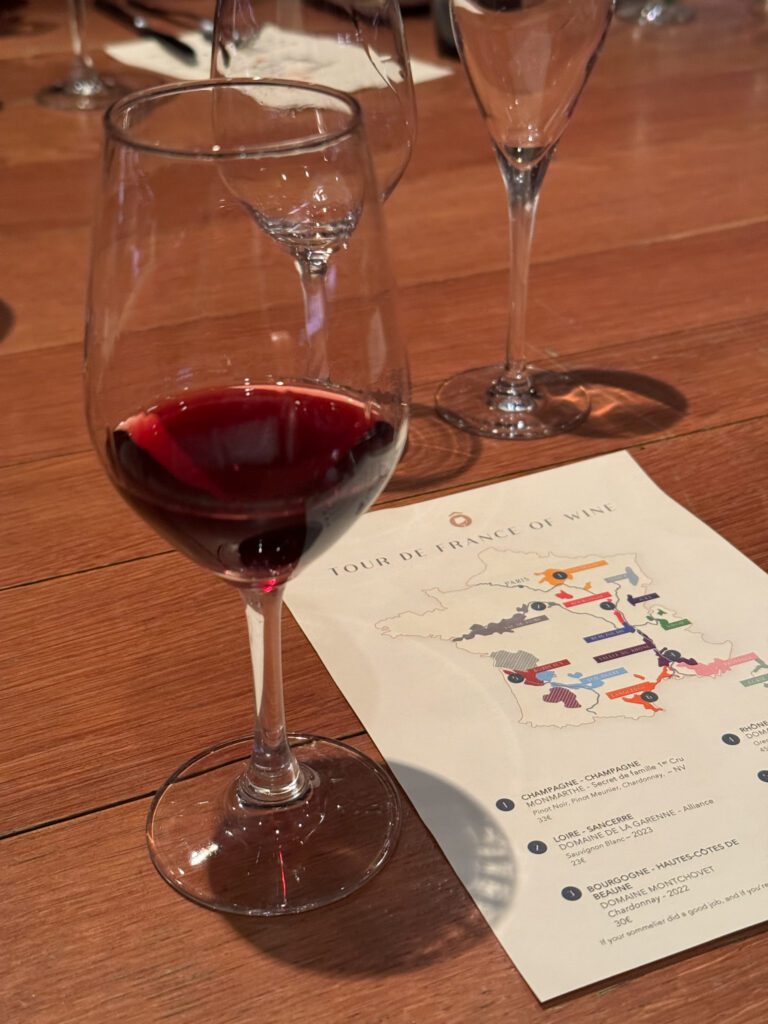
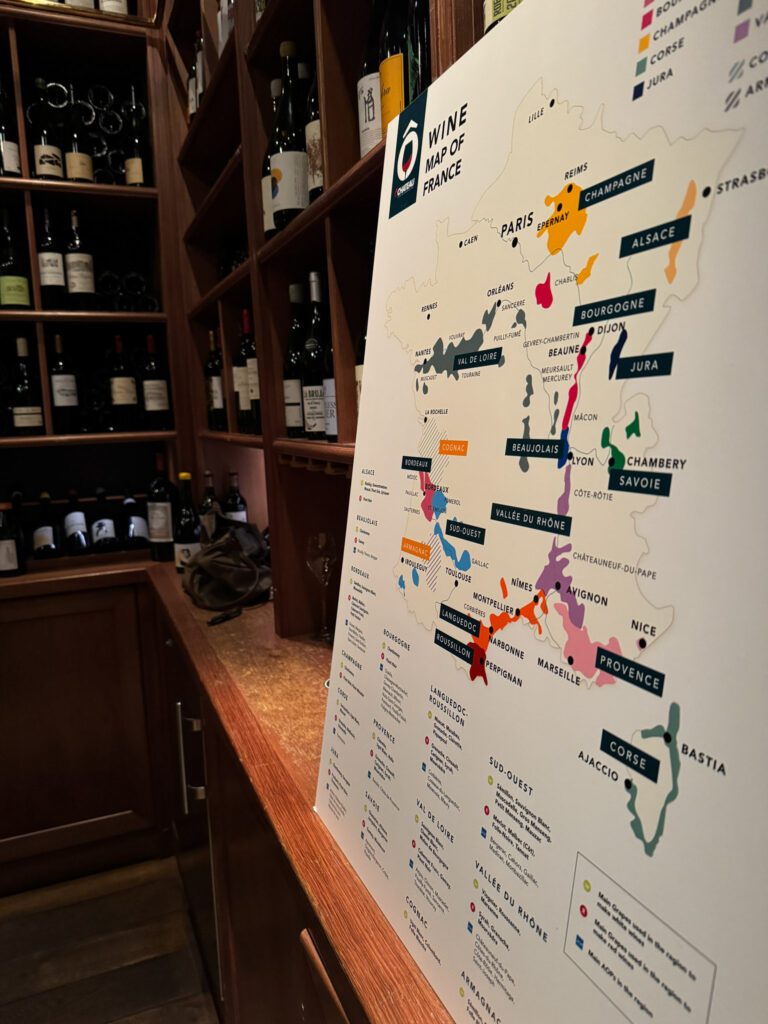
The second was a wine and cheese tasting in the 7th with Erwan, which was much more casual and low key (and I really enjoyed Erwan’s story and approach!).
He pairs five wines with five French cheeses, all of which were excellent.
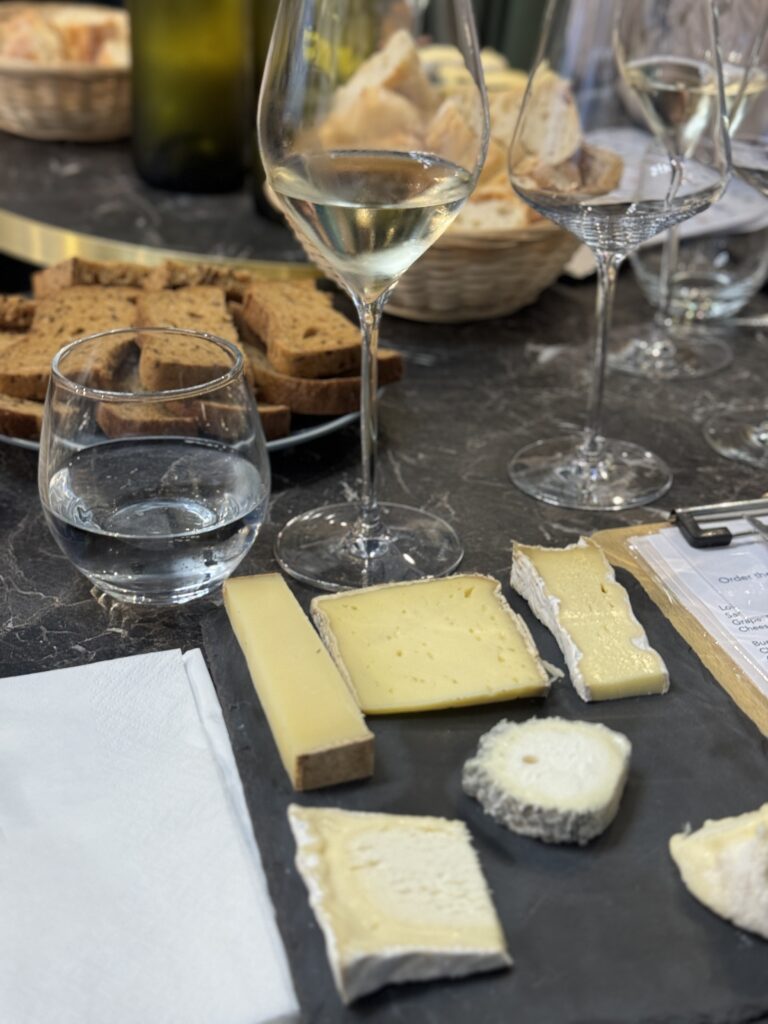
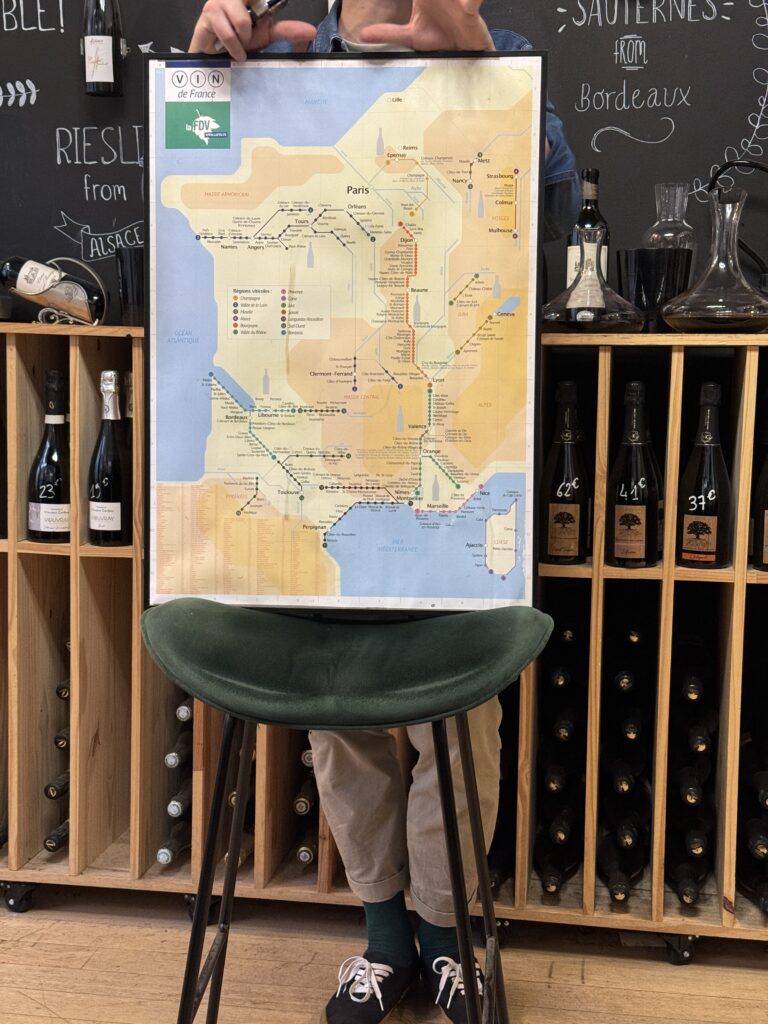
I enjoyed both (and the wines were all great), and it comes down to what kind of approach you’re looking for.
If you want to make sure to drink great wine during your trip, I’d highly recommend scheduling one of those experiences for your first night to set you up for success for the rest of your trip.
Seek Out The Best Views in Paris
Here are some of our favorite views in Paris which, as you’ll notice, does NOT include the view from the Eiffel Tower.
We’ve also excluded the observation deck at the top of Tour Montparnasse because we’re not into long, expensive elevator rides (though the view looks nice!).
The Arc de Triomphe
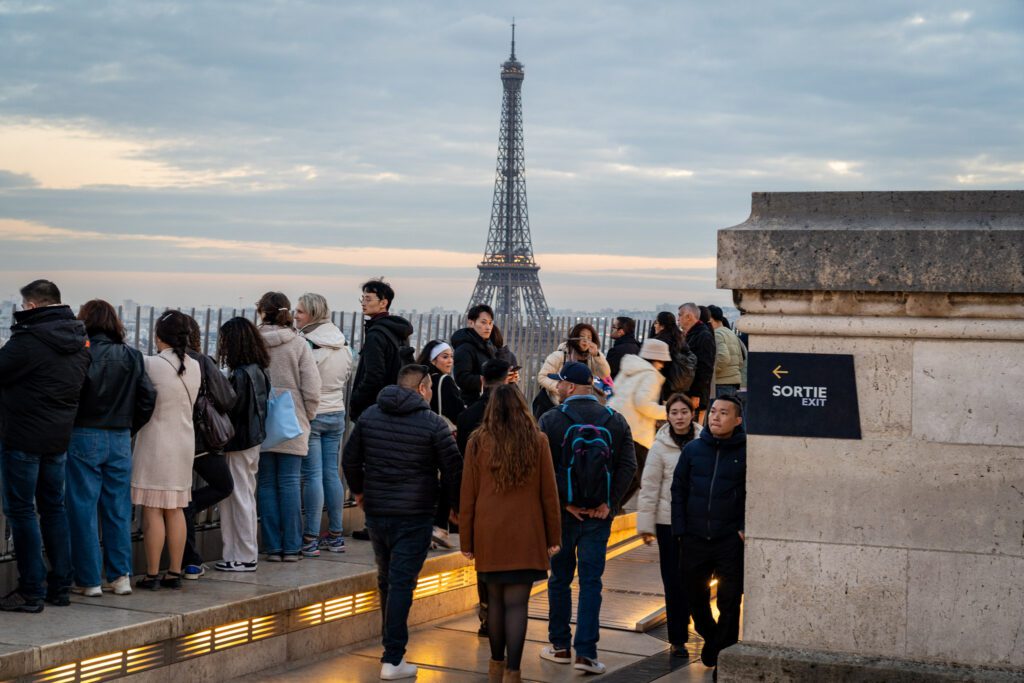
This is hands down my favorite view in Paris, and I’d say it’s a must-visit on just about every version of an itinerary.
Particularly if you come around sunset and stay until the city lights up, which is what I did (although it’s easier to do in November, when I was last in Paris, when the sun was setting around 5pm).
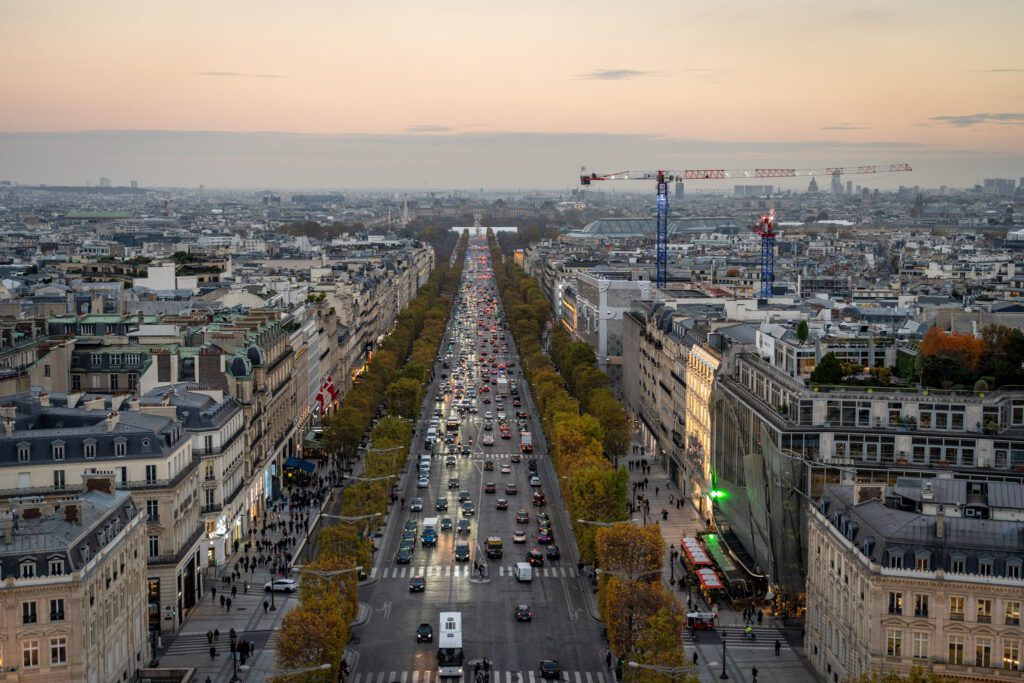
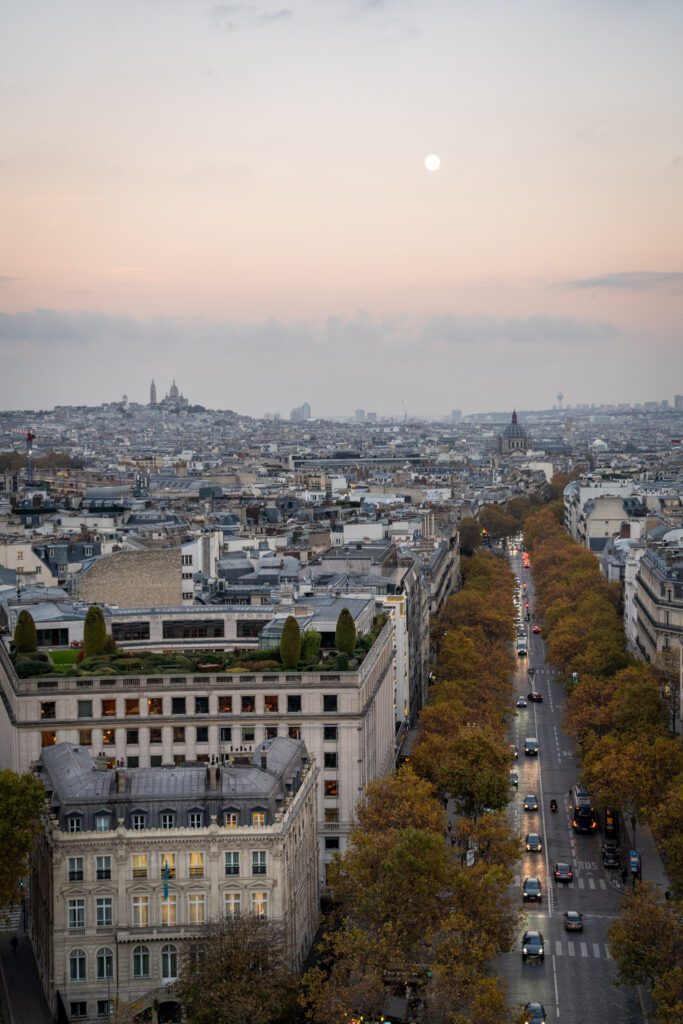
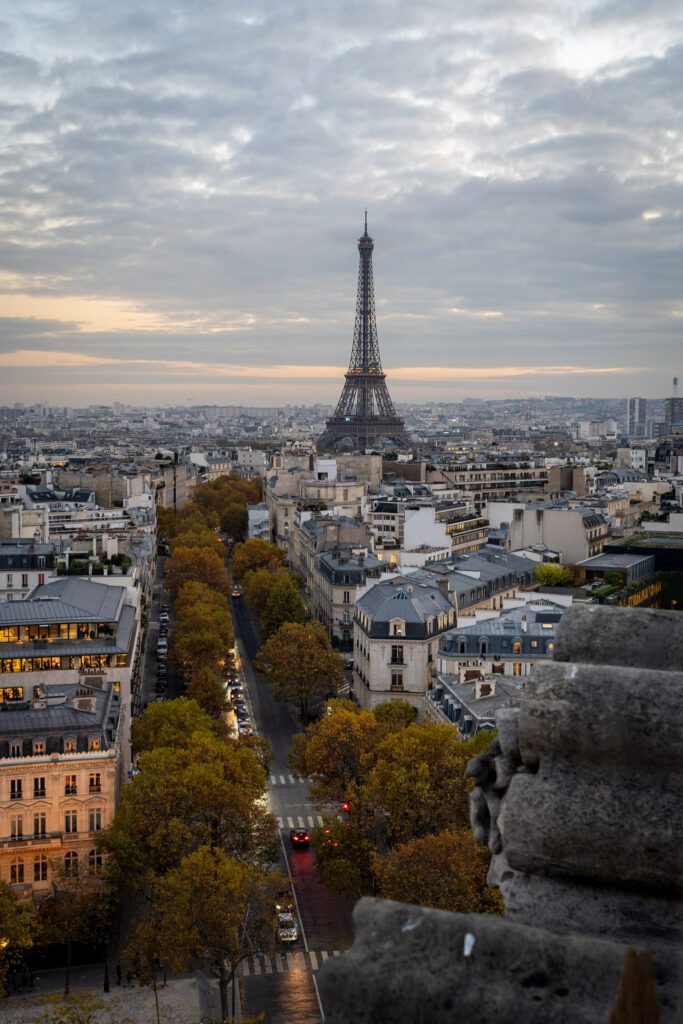
Do yourself a favor and skip the ticket office line by buying tickets online in advance for a specific time slot (you will still wait in the sometimes long security line, but at least it’s not two long lines!), which you can do here.
You’ll then climb 284 stairs en route to the terrace and viewing platform at the top (there are a couple of additional interior stops on the way up with information about the arc and its construction).
From the terrace, you have a 360 degree view of Paris, including down the Champs-Élysées, towards the Eiffel Tower, and over towards Sacré-Cœur and Montmartre. It’s a special view, and is well worth the price of admission (we think).
The Plaza Across from the Eiffel Tower
Many people head straight to the Champs de Mars – the park right under the famous metal monument – for views of the Eiffel Tower, but it’s not our favorite view.
That honor goes to the Place du Trocadero (here on Google Maps) and the geometric patterns on the floor, which make for a nice foreground with the Eiffel Tower rising in the distance.
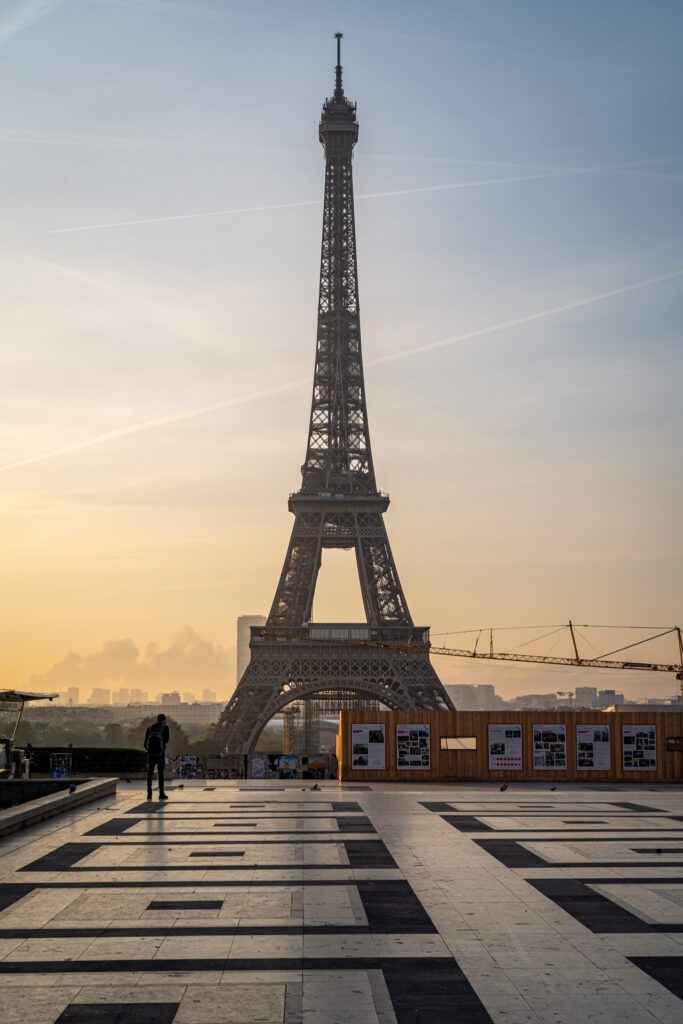
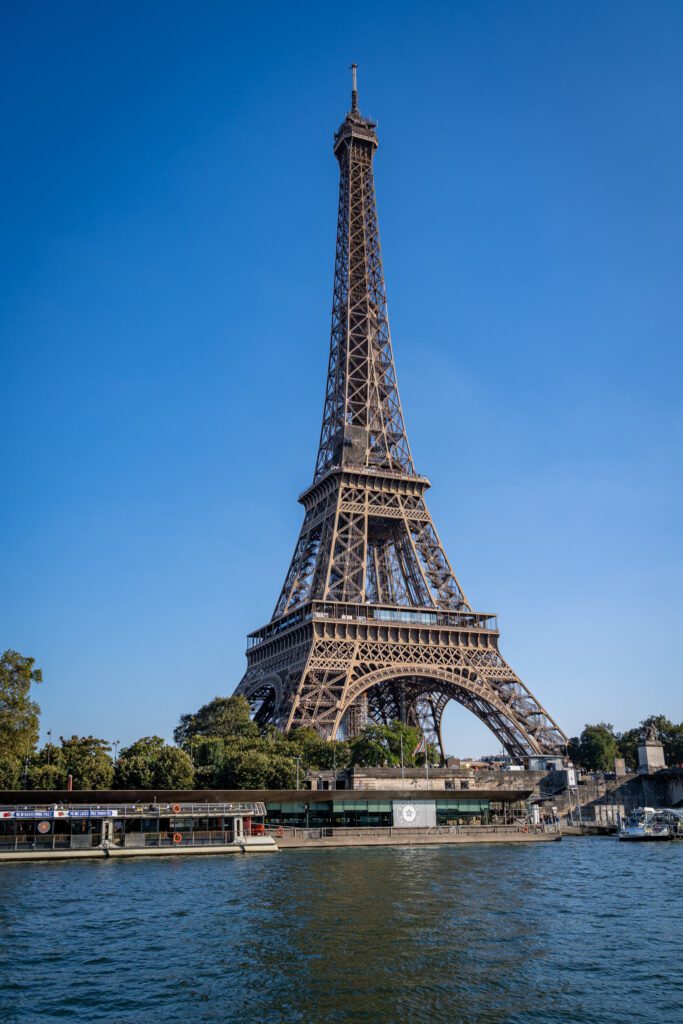
It’s just across the river from the tower, and it’s worth swinging by the river-level platforms on this side of the river for a different view of the tower (here on Google Maps).
The Bridge with the Eiffel Tower View
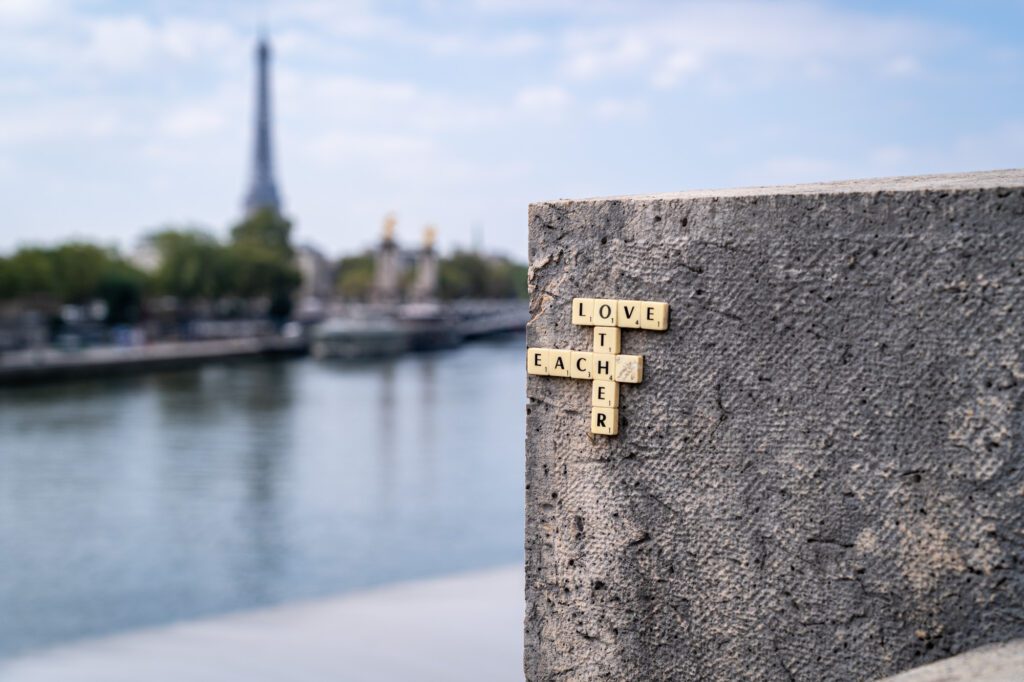
To be honest, we could have a never ending list of various views of Paris from the Seine in this section – there are just way too many specific photos to list here!
However, we should probably include at least one, and our choice is the view of the Eiffel Tower from the north side of Pont Alexandre III (here on Google Maps), where you’ll have a great view of the Eiffel Tower.
Honorable mentions for views along the Seine:
- View of Institute of France from the Louvre entrance across Pont des Arts (here on Google Maps).
- View of Ile de la Cite from Pont des Arts (same bridge, different direction)
Sacré-Cœur
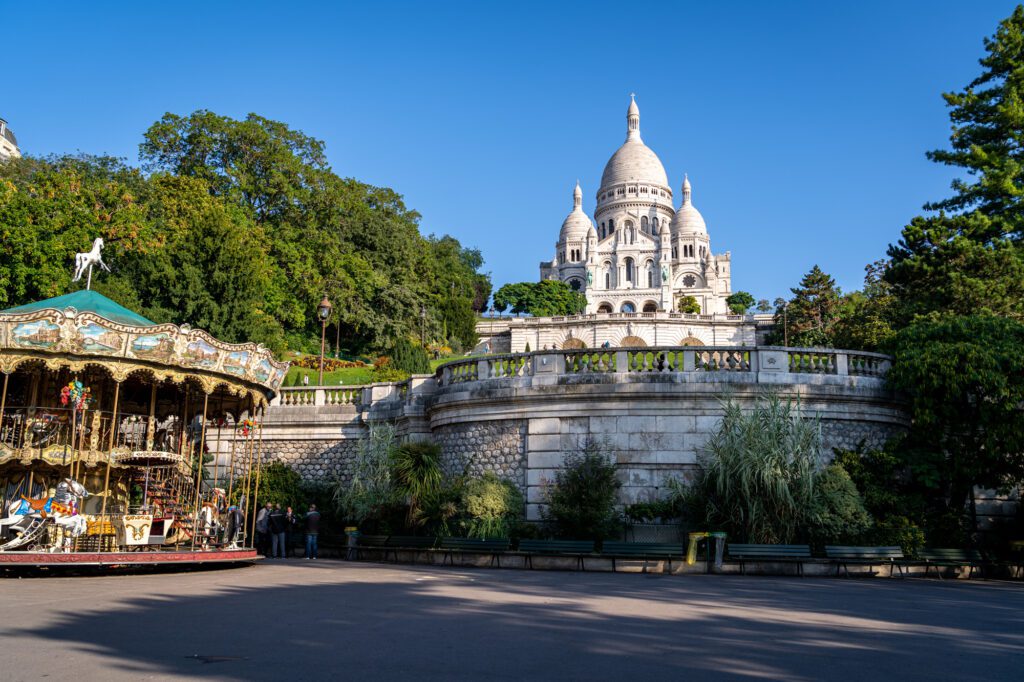
The grassy hill below Sacré-Cœur – the white church perched on the hill that is Montmartre on the north side of Paris – is one of our favorite places in Paris for the view up towards the white basilica itself, and also for the view out over Paris from the terraces just below the church.
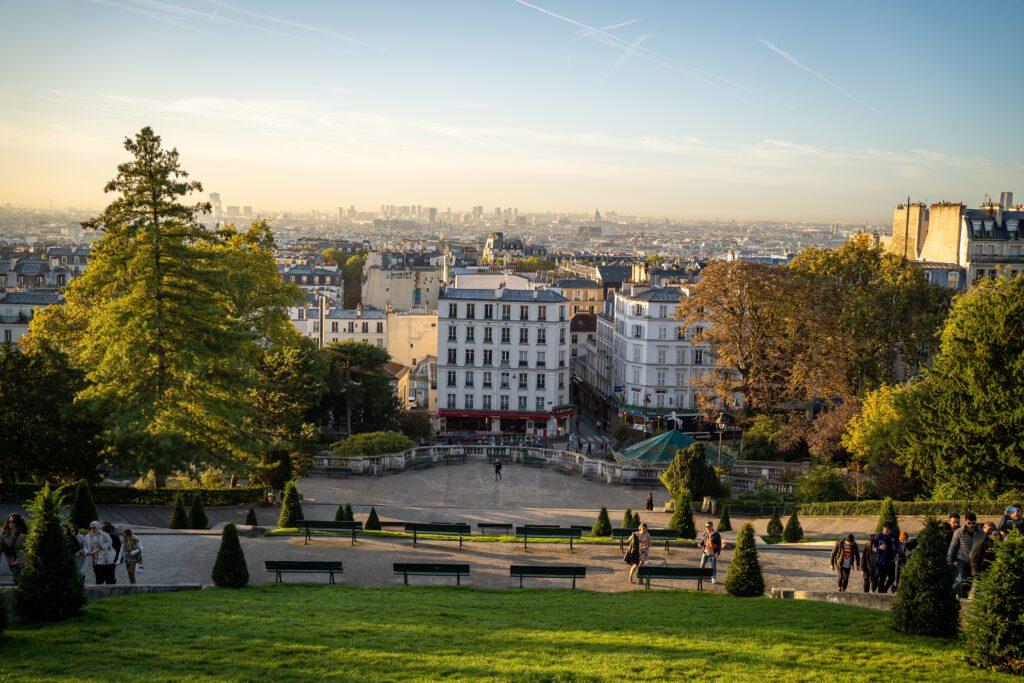
The major downside of coming up here is the fact that there are all sorts of scammers on the steps and paths leading up to the basilica.
Notably the people trying to put a bracelet on you, which you should not allow to happen because they will then try to charge you for it.
It’s not a particularly pleasant experience, and you should just ignore them on your way up (that’s the best way to get them to leave you alone).
Another way to avoid them is to simply arrive before they do, which means coming to Montmartre early in the morning, which is what we usually do (9am does the trick).
The tradeoff is that you’re coming at a time when you’ll be looking directly into the sun for photos out over Paris, but the church is nicely lit up by that golden light.
The light over Paris is better at sunset, but it is BUSY.
You can also climb the dome of the church, which gets you up even higher for an even better view (though it’s a long climb with narrow staircases that aren’t great if you get claustrophobic). You can buy tickets, which cost €8 for adults, at the ticket office onsite.
You can find the church here on Google Maps.
The Galeries Lafayette (Haussman)
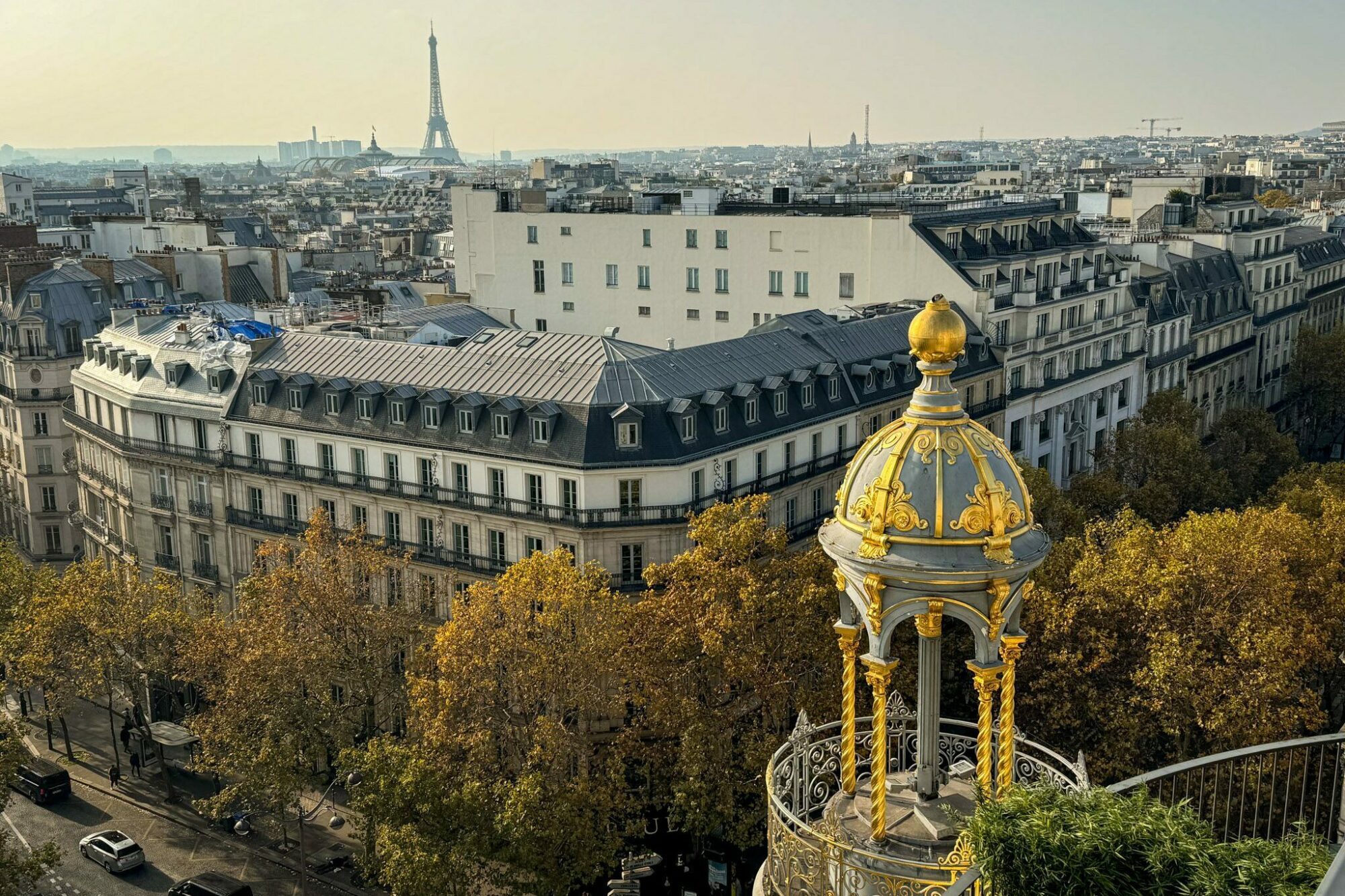
This department store in the 9th Arr. is massive, with all of the shopping you could possibly want all in one place. However, that’s not the reason why it’s here.
This department store also happens to have a bunch of restaurants on floors 8 and 9, along with a publicly accessible roof terrace (really, it’s like a three foot piece of the roof terrace) with a nice view out over Paris to the south, which includes a view of the Eiffel Tower.
To get there, head up to the 7th floor, which is NOT the floor with the publicly accessible view (the views here are occupied by restaurant tables).
Instead, take the stairs or elevator up the 8th floor, and find the entrance to the restaurant there.
Instead of walking through the arch that takes you to the restaurant, turn right as you come out of the elevator (or go straight as you come up the stairs) and find the little notch that has a view to the south.
You can find the Galeries Lafayette here on Google Maps.
More Paris Travel Guides
Planning a trip to Paris? Matt, who speaks French “really well for an American” (as multiple French people have told him – it’s his proudest achievement in life), loves Paris.
As you get into planning your trip, you might find some of these other detailed guides we’ve written about Paris helpful.
